India Travel and Photography Guide
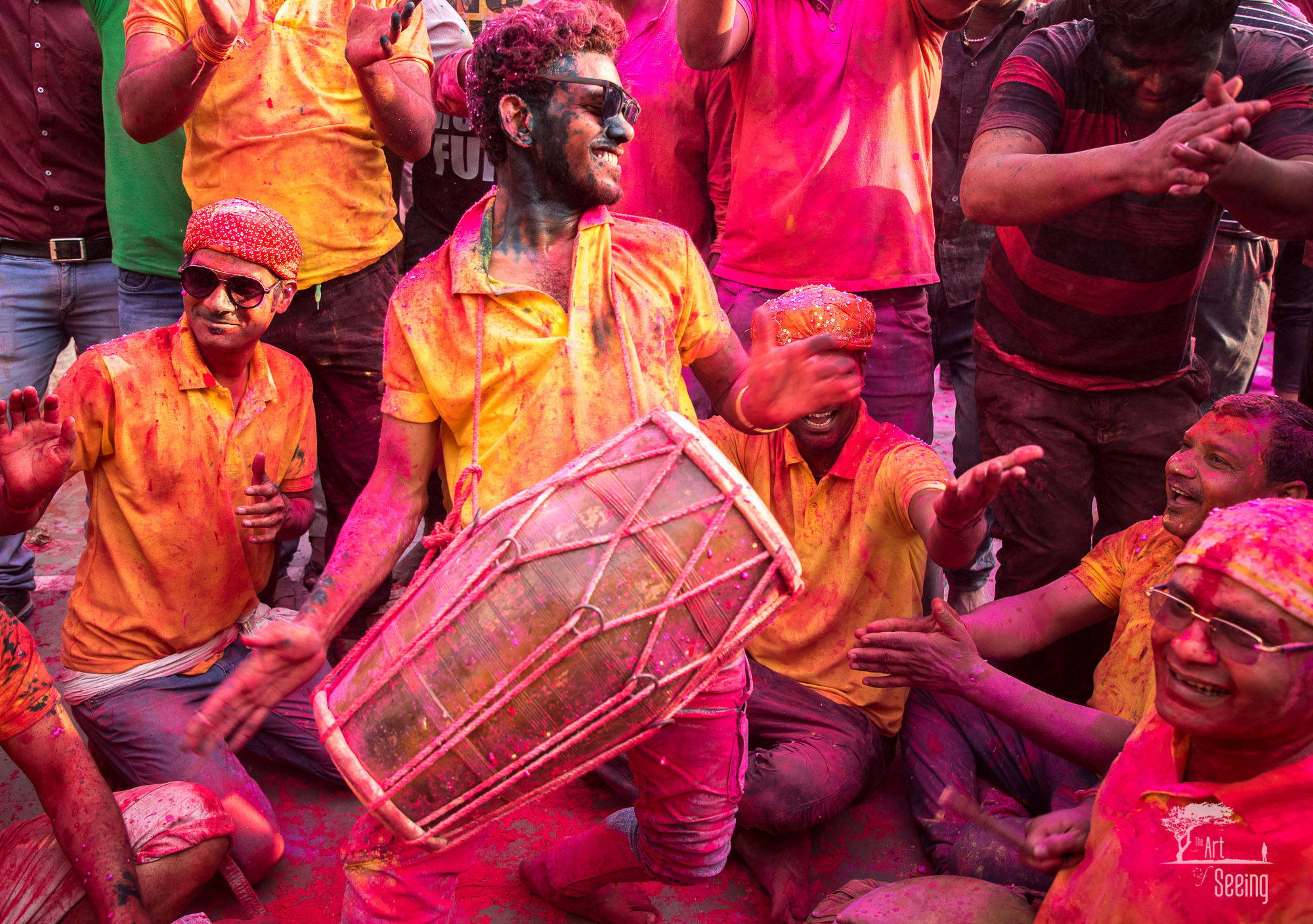
Photo by Ken Lee/Art of Seeing Photography Adventures
India is a country rich with photographic subjects.
Home to some of the most breathtaking landscapes in the world, it is a country of varied terrain from tropical rainforests to the heights of the Karakoram. There is an abundance of wildlife, too, that make India a top destination for wildlife photographers.
But to think that your camera should only be trained on landscapes and wildlife is a mistake…
In this India Travel and Photography Guide, we’ll explore three things to photograph in India that offer you every bit the opportunity to create a breathtaking shot that tells the unique story of India.
What to Photograph in India: The Architecture
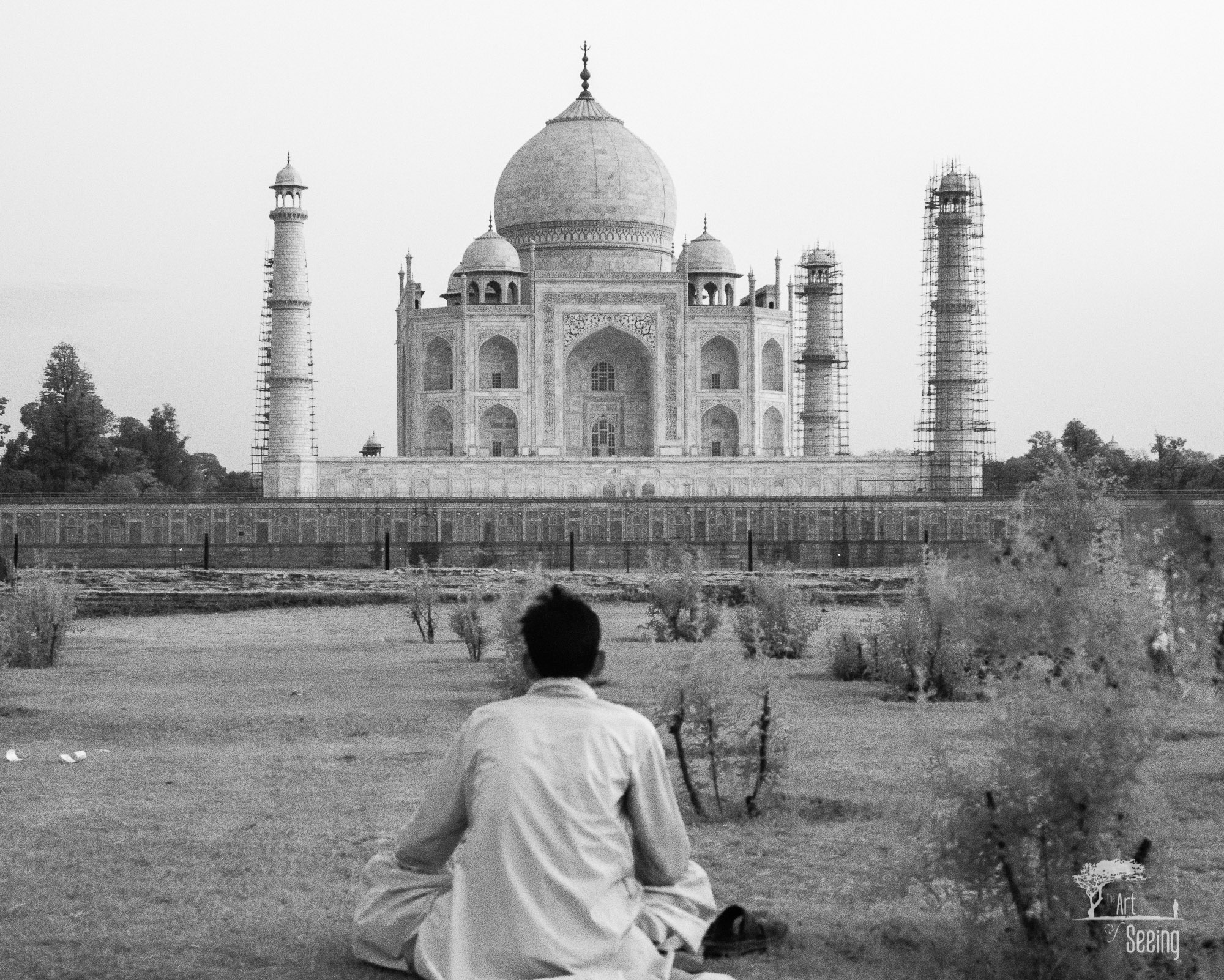
Photo by Ken Lee/Art of Seeing Photography Adventures
Whenever the words “India” and “architecture” are uttered together, one’s mind can’t help but think of the Taj Mahal.
Perhaps the greatest monument to love the world has ever seen, this striking white marble mausoleum was constructed in the mid-1600s after it was commissioned by Shah Jahan, a Mughal emperor.
The purpose of the Taj Mahal was to serve as the final resting place of his favorite wife, Mumtaz Muhal.
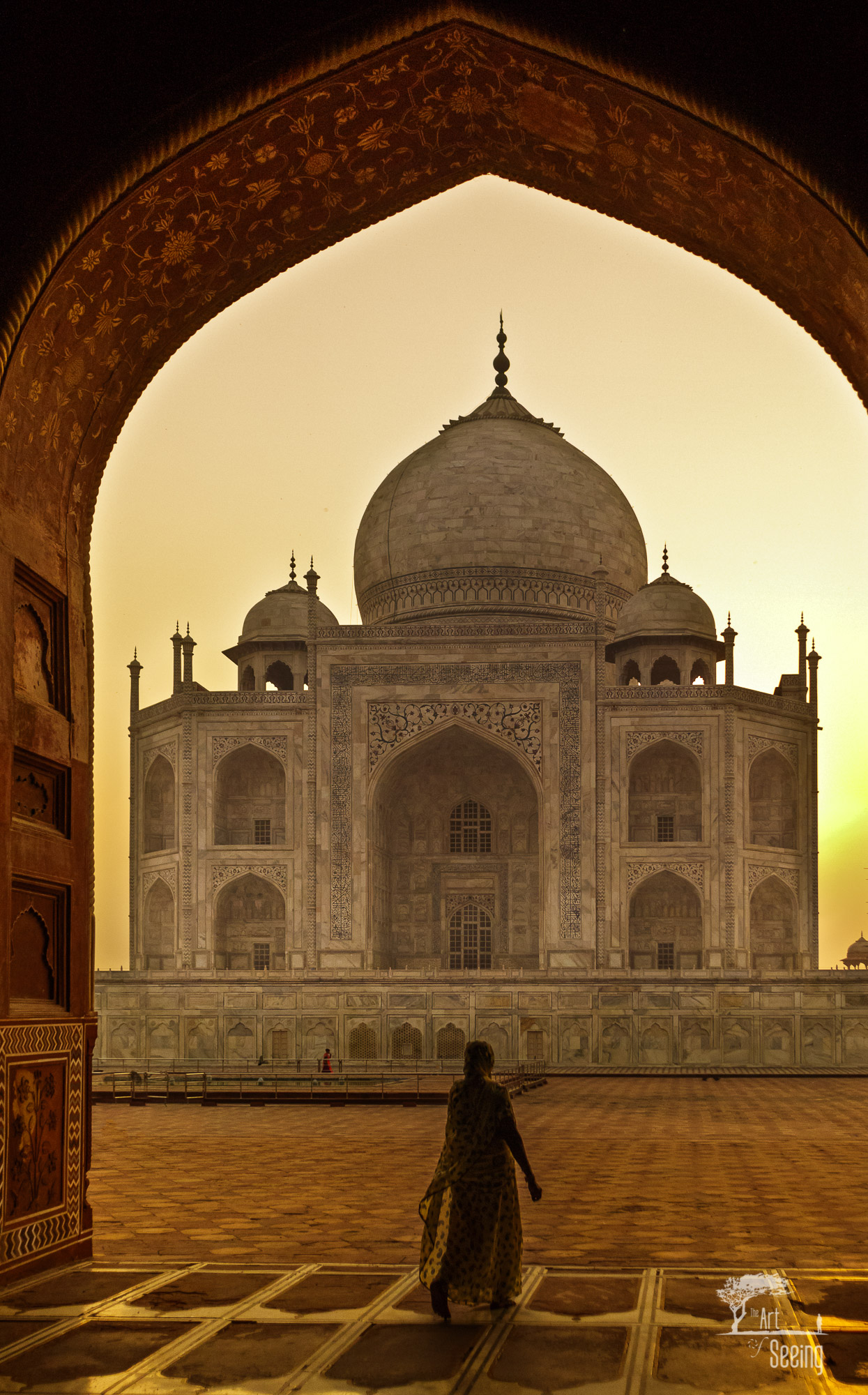
Photo by Ken Lee/Art of Seeing Photography Adventures
Rising from the banks of the Yamuna River in the city of Agra, the Taj Mahal is the centerpiece of a much larger complex - 42 acres in all - that also houses a mosque, formal gardens, and reflecting pools.
When visiting the Taj Mahal, the iconic shot of the building reflected in the pools is certainly worth making your way through the throngs of visitors.
But it’s also well worth your time to explore other vantage points and to visit the grounds at different times of day as the changing light can completely change the look and feel of your images of this iconic building.
What to Photograph in India: Festival of Holi
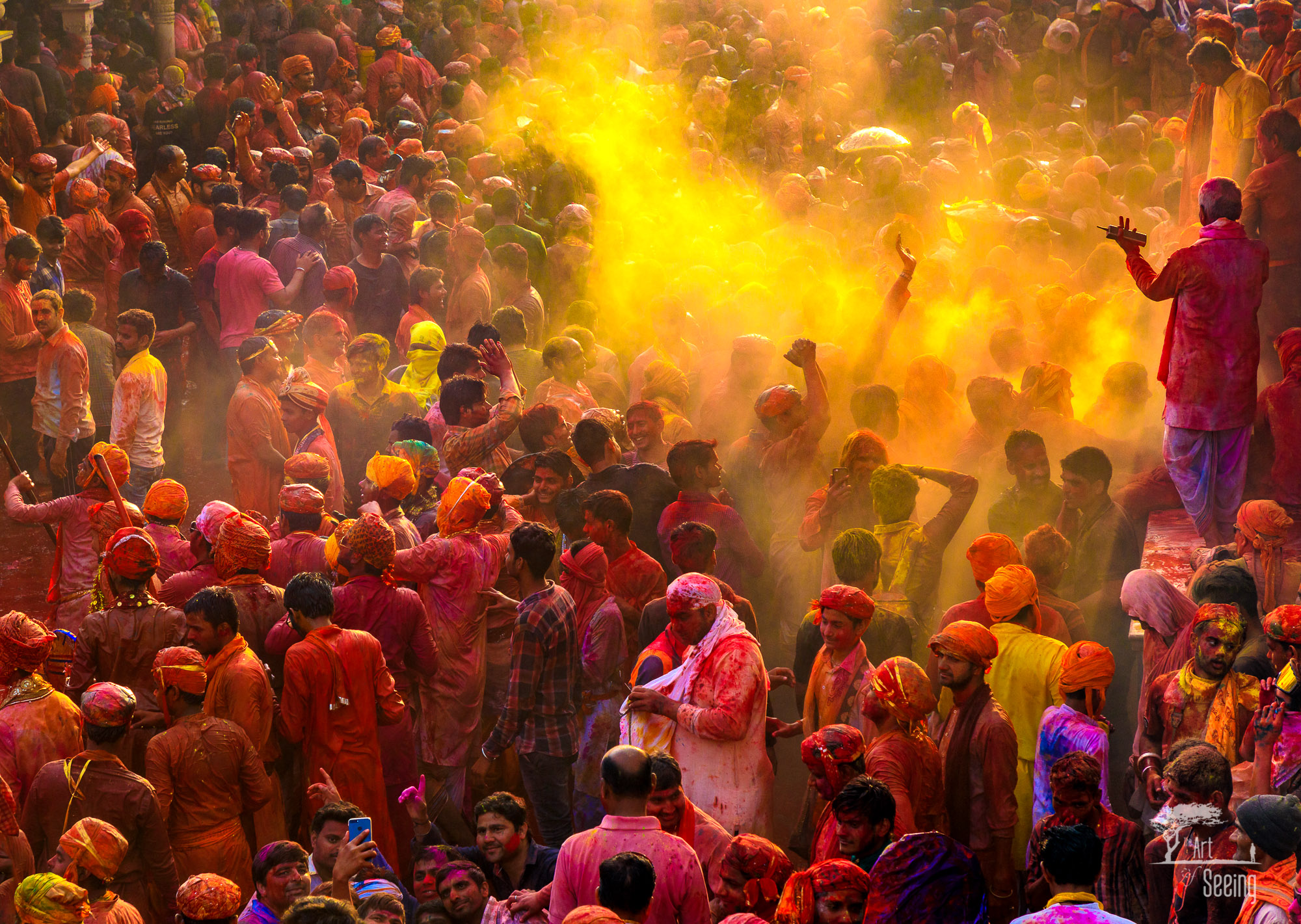
Photo by Ken Lee/Art of Seeing Photography Adventures
Holi, an ancient celebration of the arrival of spring in India, should be on your photography bucket list.
To say that it’s a time of excitement is an understatement - festival-goers from all walks of life join together to play Holi by throwing, rubbing, and smearing handfuls of colored powder all over everything and everyone.
And Holi is not an optional activity - for Indians or tourists. No matter one’s lot in life, you must participate in the Festival.
Naturally, the abundance of vibrant colors is an ideal addition to your photos, particularly of portraits of the Festival’s participants.
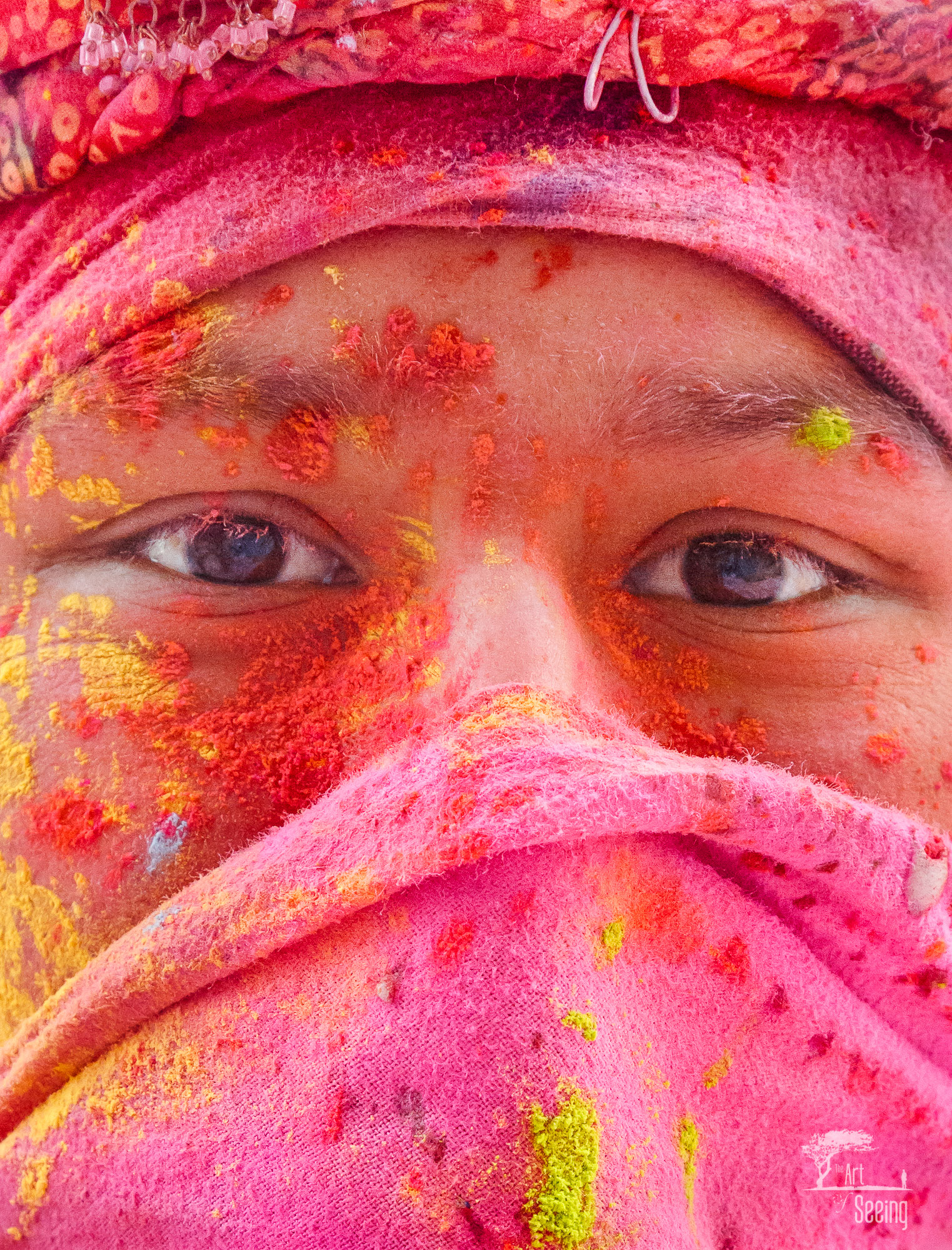
Photo by Ken Lee/Art of Seeing Photography Adventures
And while Holi is celebrated throughout India each spring, in some locations, it takes on further meaning.
For example, in the Lathmar Holi, men from the town of Nandgaon visit the town of Barsana, where the women of Barsana greet the men by beating them back with sticks, called lathis.
This spectacle is a celebration of an ancient Hindu tale, in which Lord Krishna of Nandgaon visited the subject of his affections, Radha, in Barsana. However, Krishna began to tease Radha and her friends, who took offense to his actions and drove him out of their town.
Regardless of where you participate in Holi, it is certainly a spectacle worth seeing and photographing! Just be sure you take precautions to cover your camera and lens, lest you’ll end up with lots of non-functioning gear.
What to Photograph in India: Daily Life
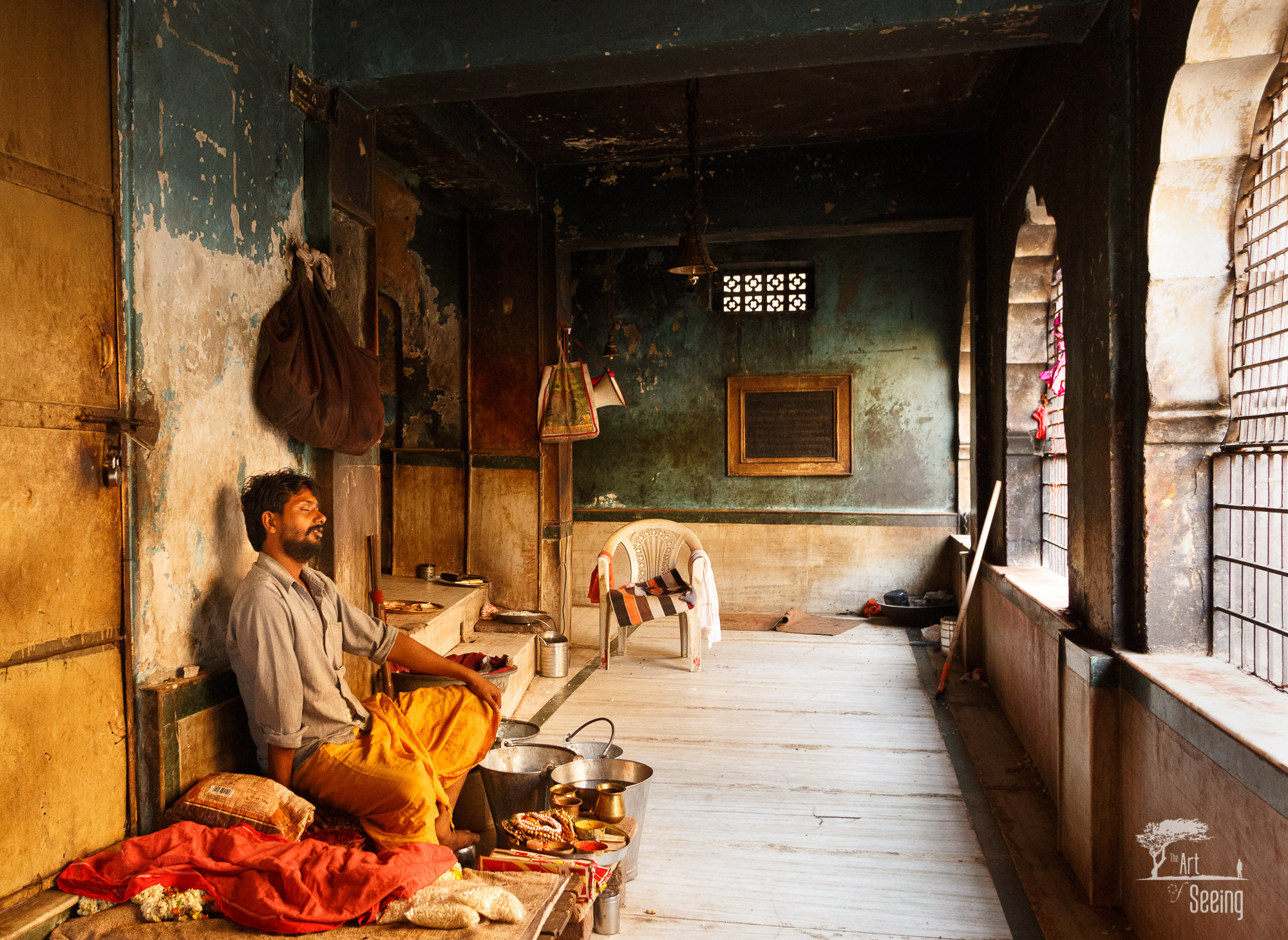
Photo by Ken Lee/Art of Seeing Photography Adventures
Whether in Delhi, Varanasi, Jodhpur, or a city or town in between, daily life in India affords you the opportunity to highlight the beautiful, vibrant, and friendly people of India.
In Delhi, the juxtaposition of new and old is plainly evident, with vestiges of ancient ruins and colonial rule still evident amongst modern-day luxury towers whose shadows linger above the streets where you can photograph the hubbub of commerce in one of the city’s many street markets.

Photo by Ken Lee/Art of Seeing Photography Adventures
In Varanasi, you can photograph young monks that begin their day on the banks of the Ganges by practicing yoga and meditating as the morning light burns off the mist hanging above the river.
In Jodhpur, the blue city, locals go about their day with the city’s once-vibrant, yet now fading blue walls to serve as the backdrop of your portraits.
And everywhere you go, you’ll likely have a following of children, some of whom may have never seen a foreigner.
It is a uniquely diverse and electric country, and one that is supremely open and friendly towards visitors as well.
Planning Your India Photography Trip
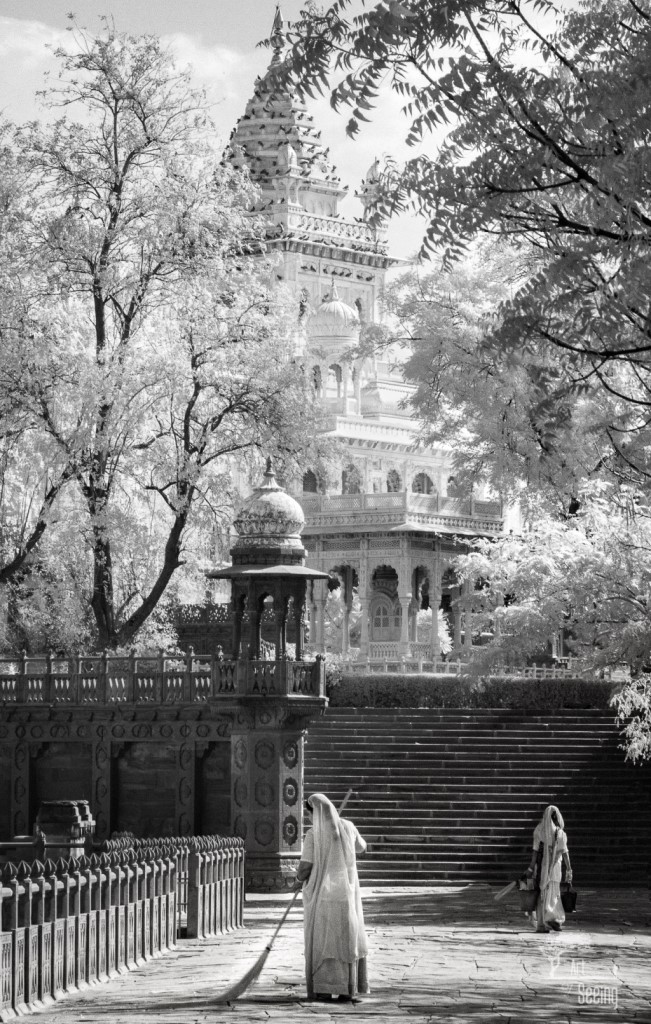
Photo by Ken Lee/Art of Seeing Photography Adventures
The difficulty with planning a photography trip to India is twofold. First, you have to know when the best time is to visit this magical place, and two, you have to figure out what should be on your list of must-see locations.
This might sound like an easy task, but with so many possibilities for subject matter in such a diverse and large nation, it can be almost overwhelming trying to decide what makes the cut and what doesn’t.

Photo by Ken Lee/Art of Seeing Photography Adventures
If you’ve never traveled to India, I highly suggest you do so as part of a photography tour.
And by “tour,” I don’t mean a run-of-the-mill photography experience in which you spend five days racing from one corner of the country to another in a motorcoach with a few dozen other foreigners...
Instead, India is best explored with your camera by using a slow, methodical approach - two weeks in-country is ideal - that is truly an immersive adventure.
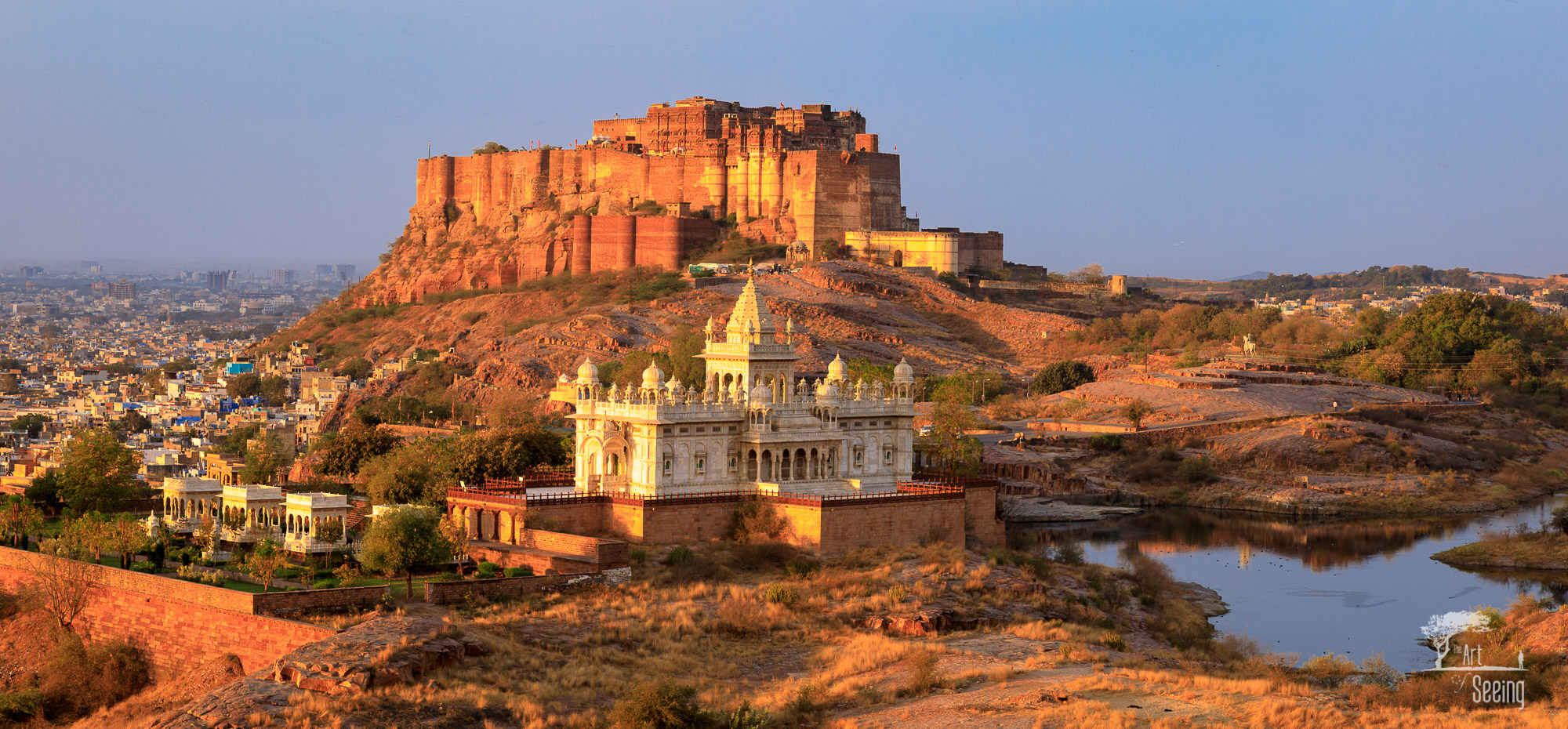
Photo by Ken Lee/Art of Seeing Photography Adventures
For that, I recommend exploring India with Ken Lee as part of his Colors of India Photography Workshop and Tour.
You’ll have a chance to photograph each of the locations discussed above and then some, all without having to plan the itinerary, book lodging, or concern yourself with getting from point A to point B.
For me, the best part of Ken’s workshops is that you aren’t just a number to be herded in and out of a massive bus for photo opportunities that everyone else gets.
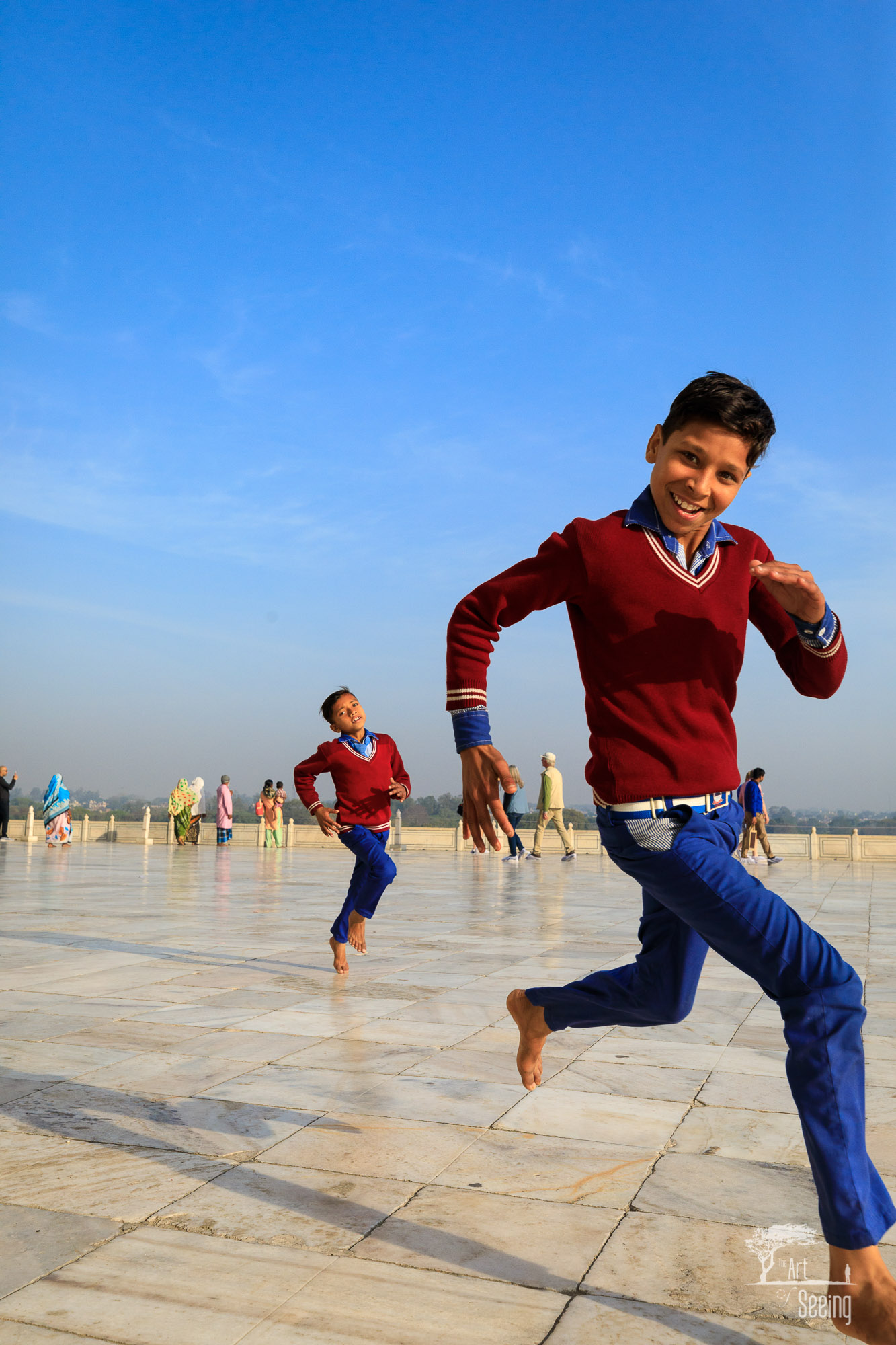
Photo by Ken Lee/Art of Seeing Photography Adventures
Instead, you’re shepherd from the iconic spots like the Taj Mahal to off-the-beaten-path locations that few tourists get to see or photograph.
In that regard, this workshop is as much about immersing yourself in the culture and traditions of India and learning about its history and people as it is about improving your photography skills. This is a hallmark trait of Ken’s Art of Seeing Photography Adventures - it’s a personal journey that puts you in touch with the real people and stories of the places you explore.
The tour takes place over two weeks - March 2-15, 2020 - so you can experience the chaos of Holi to the fullest extent as spring descends onto India.
This is an adventure you don’t want to miss! Get more details by clicking here.
Other Tips for Planning an India Photography Trip
- Where to fly into: Delhi Airport is the busiest airport in India and offers the most international flights.
- Best luggage: For a trip of this length, the Nomatic Check-In roller bag is the ideal choice. It offers polycarbonate construction that stands up to the rigors of travel, silent wheels, low-profile handles, and a three-stage aluminum handle to fit your height. With space for 78 liters of gear, this bag has plenty of room for a 5-day trip or longer.
- Attractions & Things to Do: Humayan's Tomb is an architectural wonder from the 16th Century that's definitely worth seeing. For fun and games, hit up Escape Reality Delhi.
- Best Time of Year to Visit: The dry season (October to March) is your best bet.
- Check the weather in the Delhi area right now.
We Recommend
Patagonia Photography and Travel Guide
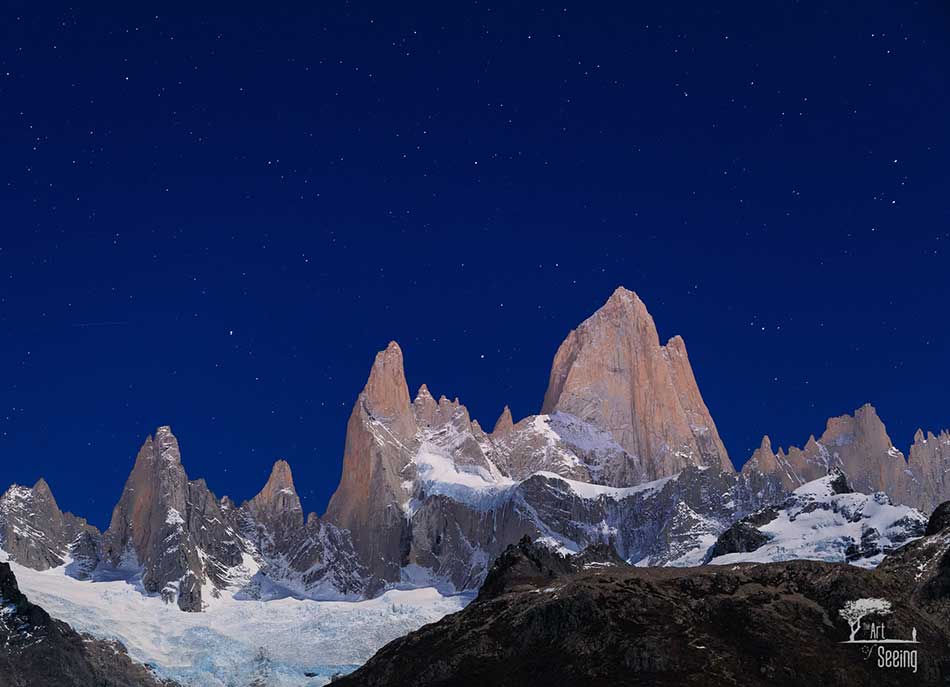
Photo by Ken Lee/Art of Seeing Photography Adventures
Patagonia is a breathtakingly beautiful area that occupies the southern end of South America.
It’s soaring mountains, windswept plains, pampas, and deserts extend into parts of Chile and Argentina.
The sheer variety of landscapes in this region makes it worthy of a photography-centric trip. But there is so much more to Patagonia than impressive granite spires, alpine lakes, and desert plateaus.
In this Patagonia photography and travel guide, we’ll dive into some of Patagonia’s well-known, must-see features that you need to photograph and give some insights into some off-the-beaten-path opportunities for exploring Patagonia with your camera as well.
What to Photograph in Patagonia - Mirador Los Torres and Los Cuernos
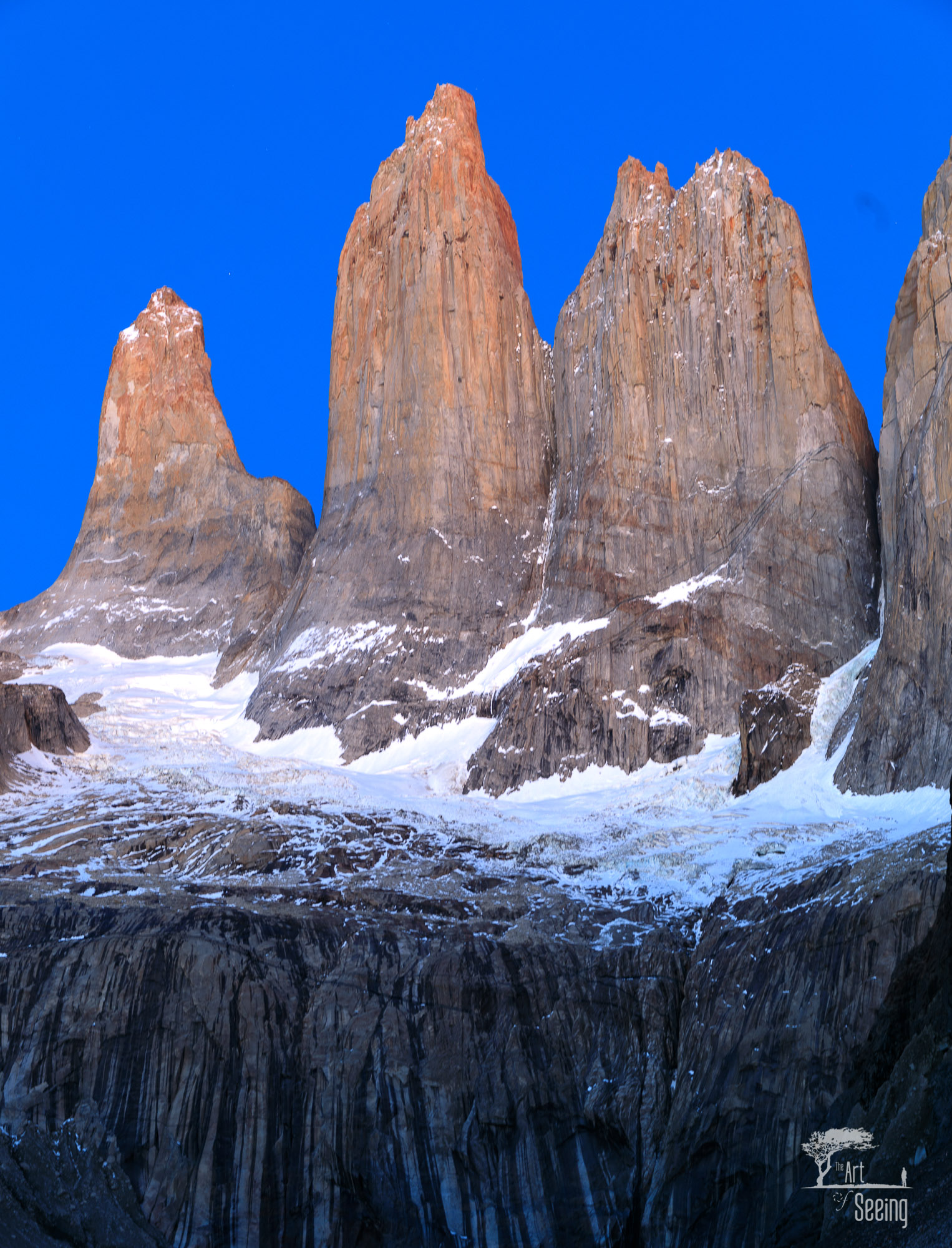
Photo by Ken Lee/Art of Seeing Photography Adventures
A trip to Patagonia would not be complete without capturing images of its jagged mountain peaks.
Areas like Mirador Los Torres and Los Cuernos are extremely popular, and for good reason - the views from these locations are postcard-worthy, to be sure.
Mirador Los Torres, or “The Towers” is worth the trip to Patagonia by itself.
The triad of granite towers extend virtually straight up toward the heavens, their pointed peaks piercing the sky.
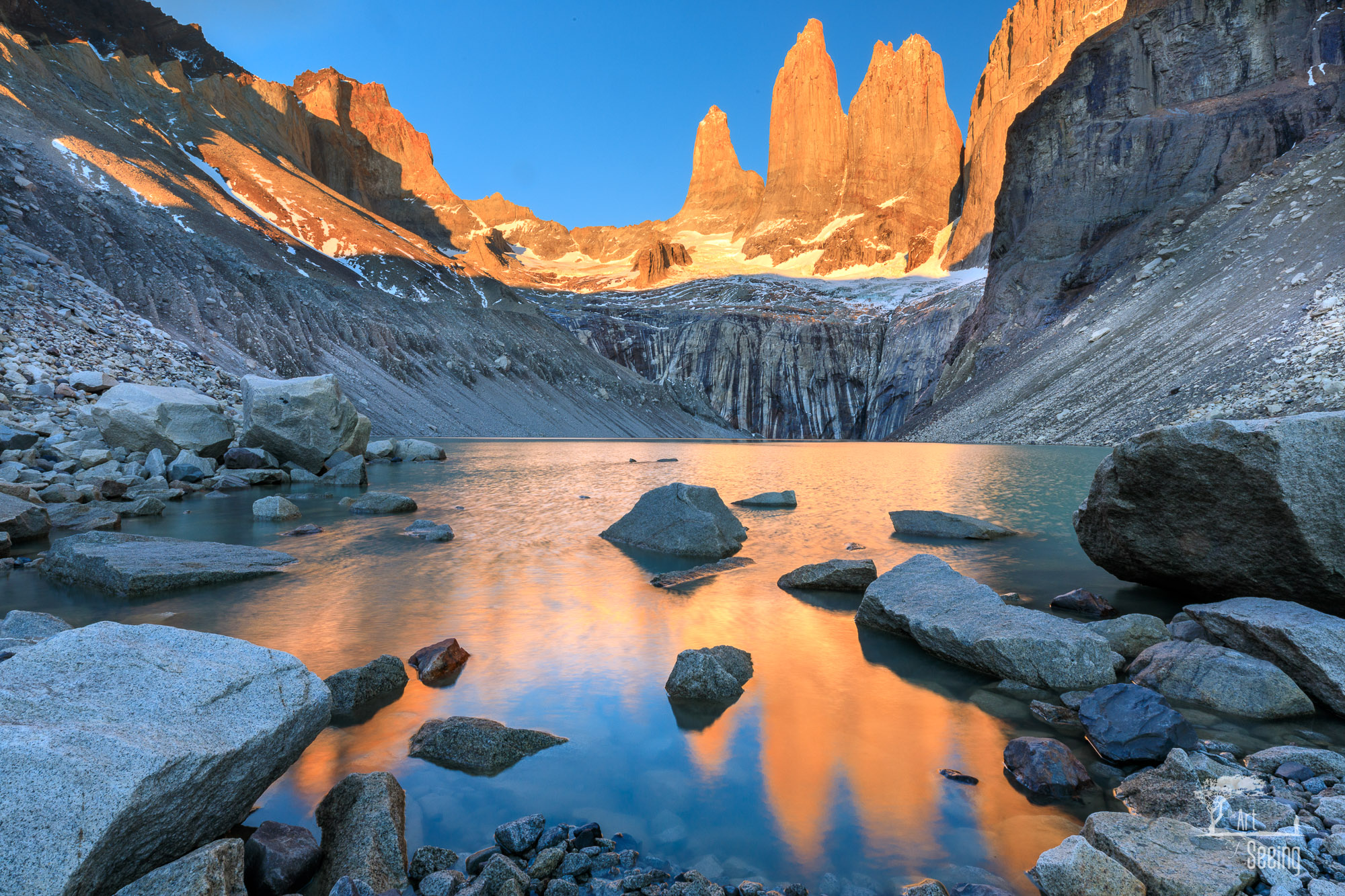
Photo by Ken Lee/Art of Seeing Photography Adventures
As you can see above, sunrise and sunset are the ideal time to photograph these mountains, with the warm, golden tones of the light softly falling on their rugged profile.
It’s a busy location, despite the grueling hike to get there. But it’s clearly a location you don’t want to miss on your trip to Patagonia!
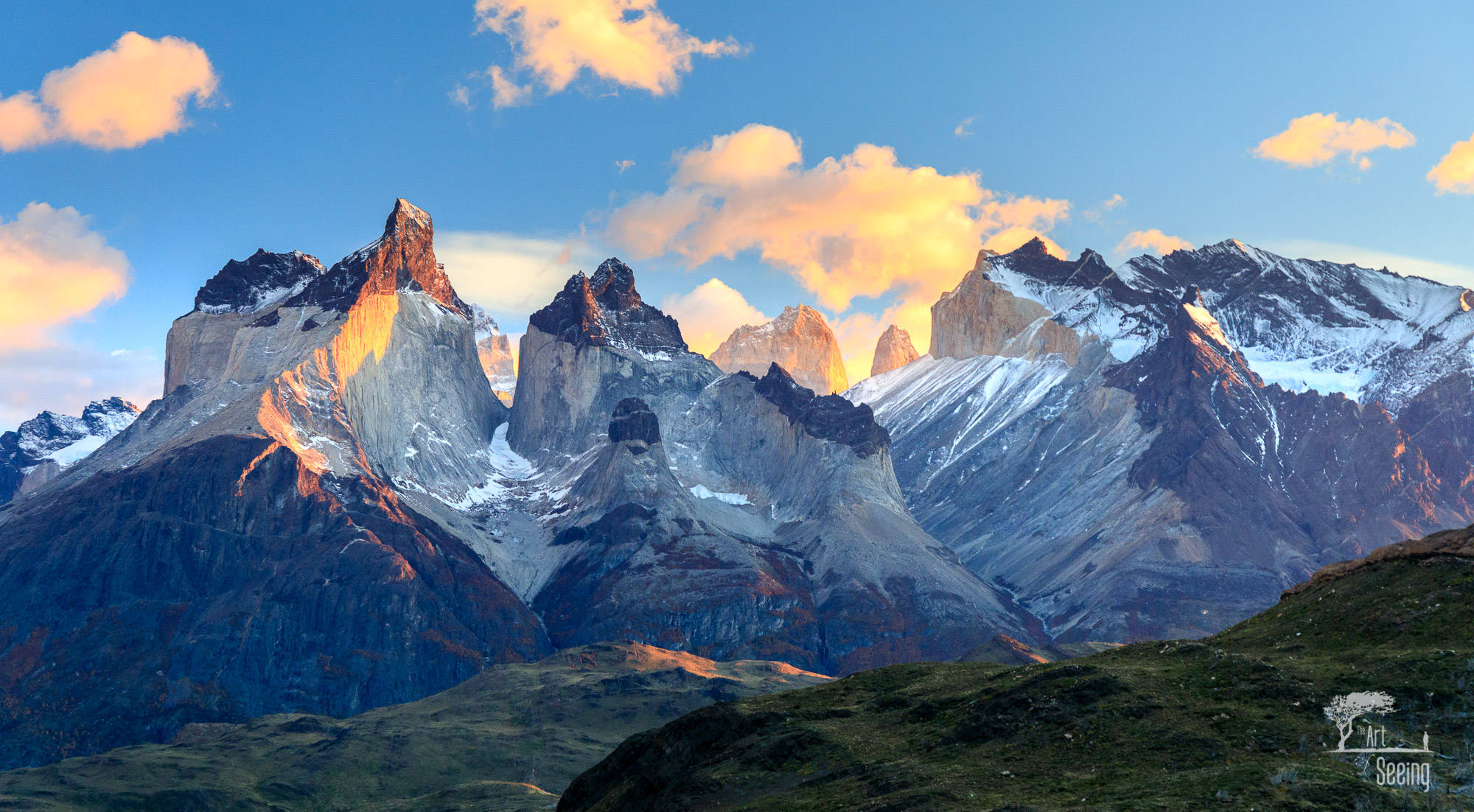
Photo by Ken Lee/Art of Seeing Photography Adventures
For a completely different view - a much wider one that encompasses a vast swath of the Patagonian landscape - travel to Los Cuernos.
Los Cuernos, which means “The Horns,” is in Torres Del Paine National Park, Chile, a particularly spectacular area of Patagonia that’s also home to Mirador Los Torres.
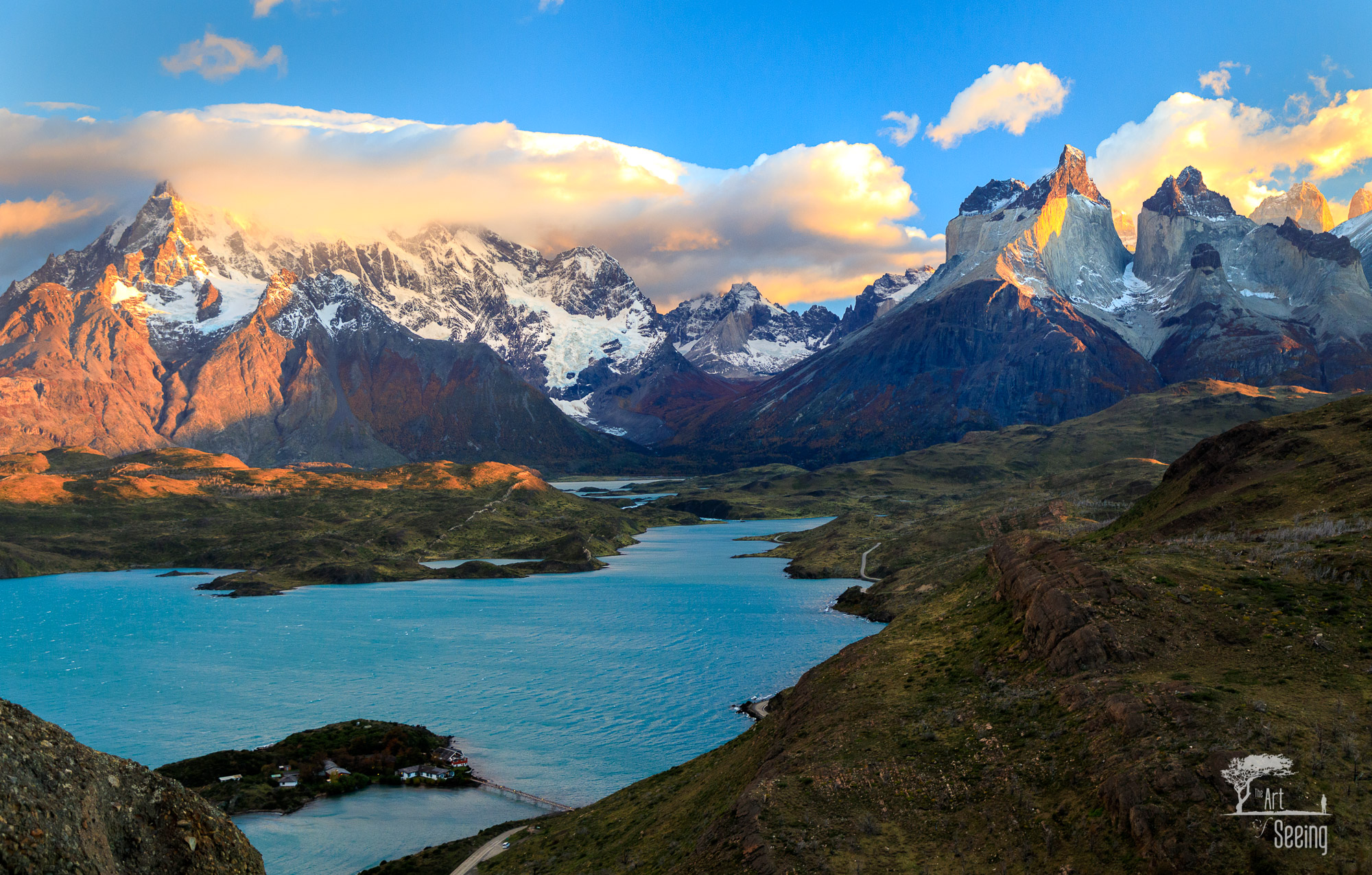
Photo by Ken Lee/Art of Seeing Photography Adventures
The mountains by themselves are impressive enough, but from the vantage point seen above, with the eye-poppingly blue waters of Lake Pehoe in the foreground, the scene becomes that much more impressive.
Better still, this and other popular vantage points in the Lake Pehoe area can be accessed easily on foot. In fact, you can simply walk the primary road along the lake and find many different perspectives for photographing the lake and the mountains beyond.
What to Photograph in Patagonia - Wildlife
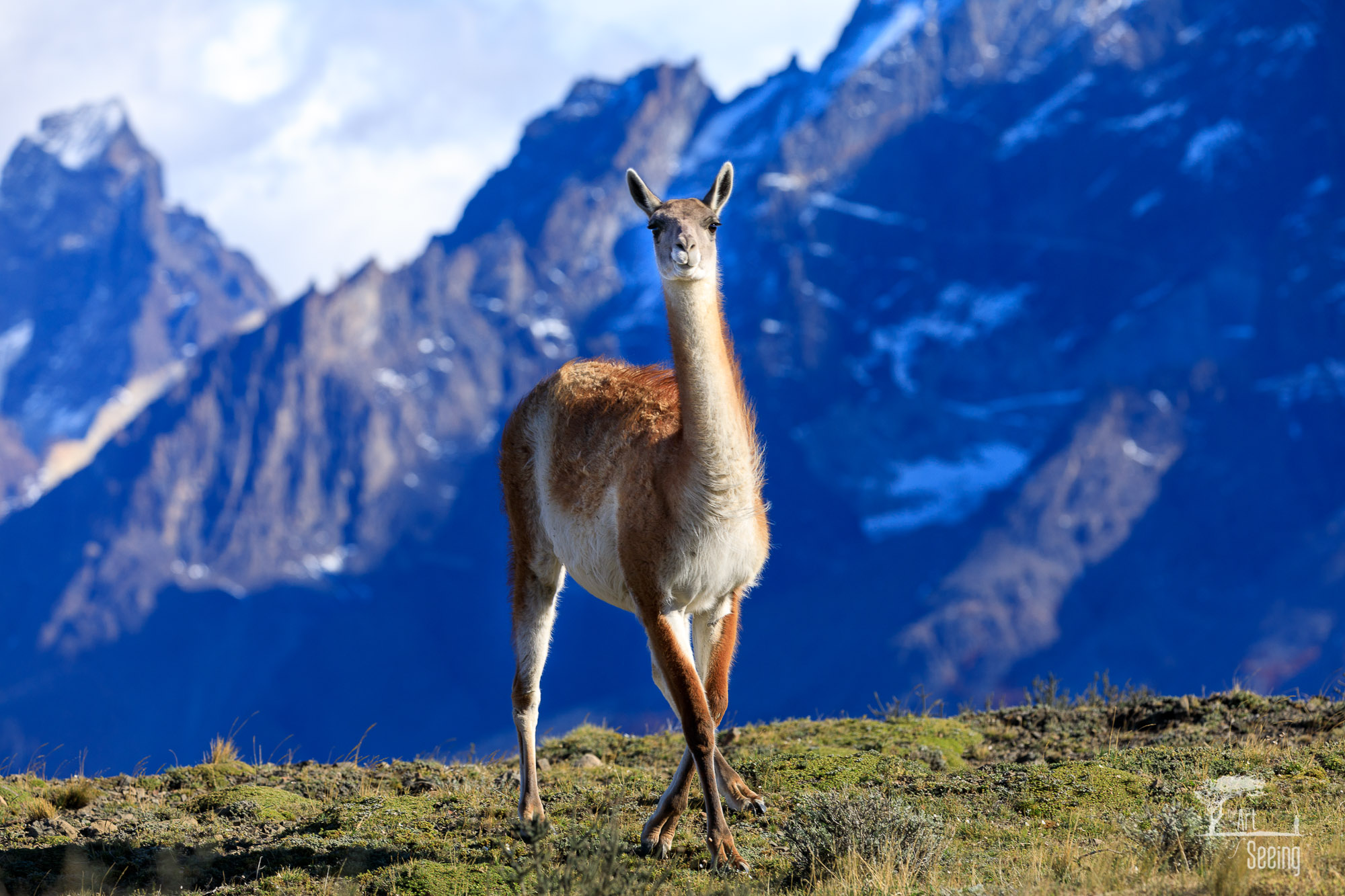
Photo by Ken Lee/Art of Seeing Photography Adventures
If you can peel yourself away from the stunning vistas that Patagonia presents, you’ll find that it’s also an area abundant with wildlife.
Land animals like the Patagonian Mara, Hairy Armadillo, Patagonian Fox, and Guanaco can be found in many locations throughout the region.
There are large populations of birds and sea life as well, including the Andean Condor, Southern Crested Caracara, Dolphins, Sea Lions, and Southern Elephant Seals.
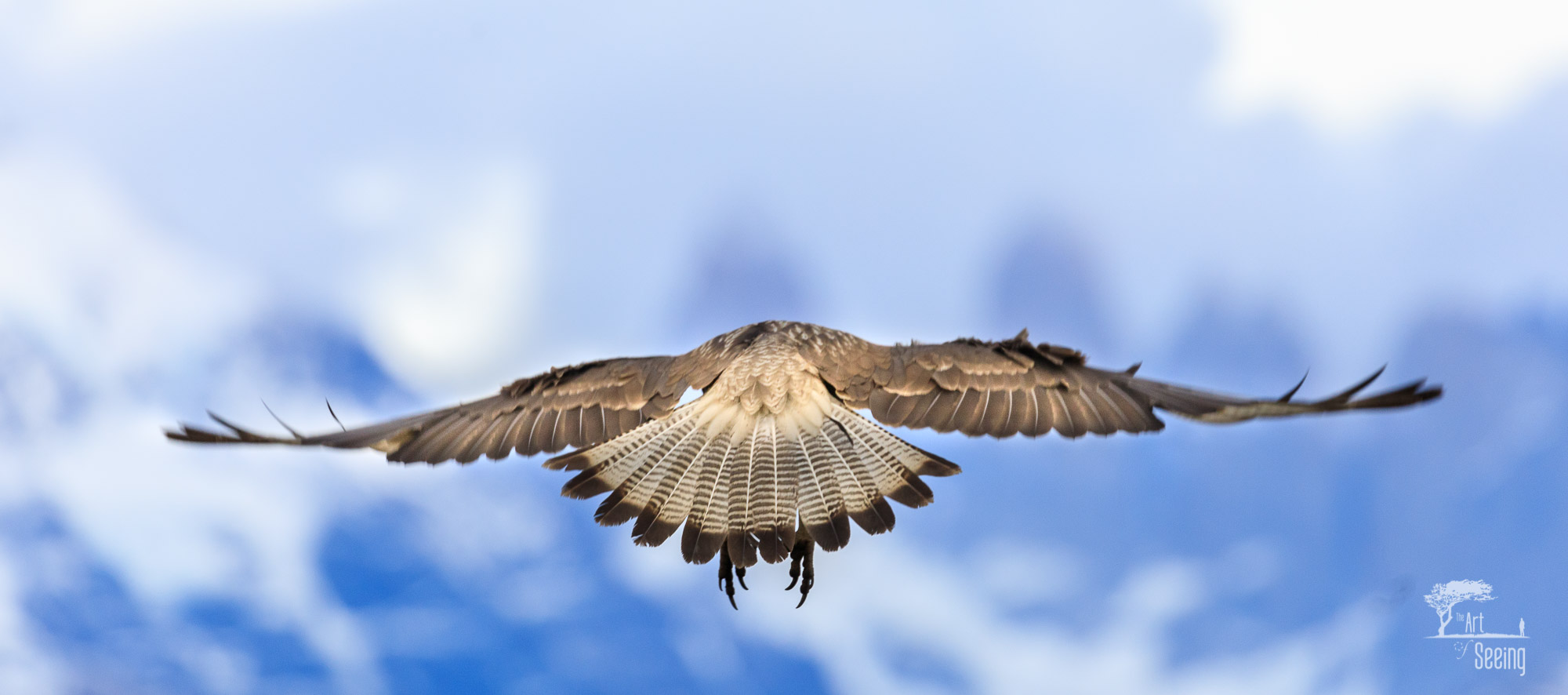
Photo by Ken Lee/Art of Seeing Photography Adventures
Photographing wildlife in Patagonia requires a bit of a different approach than photographing landscapes, but the two certainly make an ideal pairing.
When photographing land animals like the Guanaco, taking a wider shot that allows the viewer to see the animal’s surroundings gives a little context to the photo. Paired with some close-up views from a telephoto lens, these images allow you to tell a more detailed story about the animal and where it lives.
Of course, as seen above, there’s opportunities to use the majesty of Patagonia as a beautifully blurred backdrop for wildlife photos.
Though the mountain peaks are blurred, the impression of them is nonetheless strong.
Don’t be afraid to experiment with your compositions, either. One typically doesn’t see photos of birds in flight that feature their backsides, but in this case, it works beautifully. Just look at the sharpness of detail of the bird’s hind feathers!
It’s a different take on bird photography, but one that certainly results in a unique and compelling shot.
What to Photograph in Patagonia - Gaucho Culture
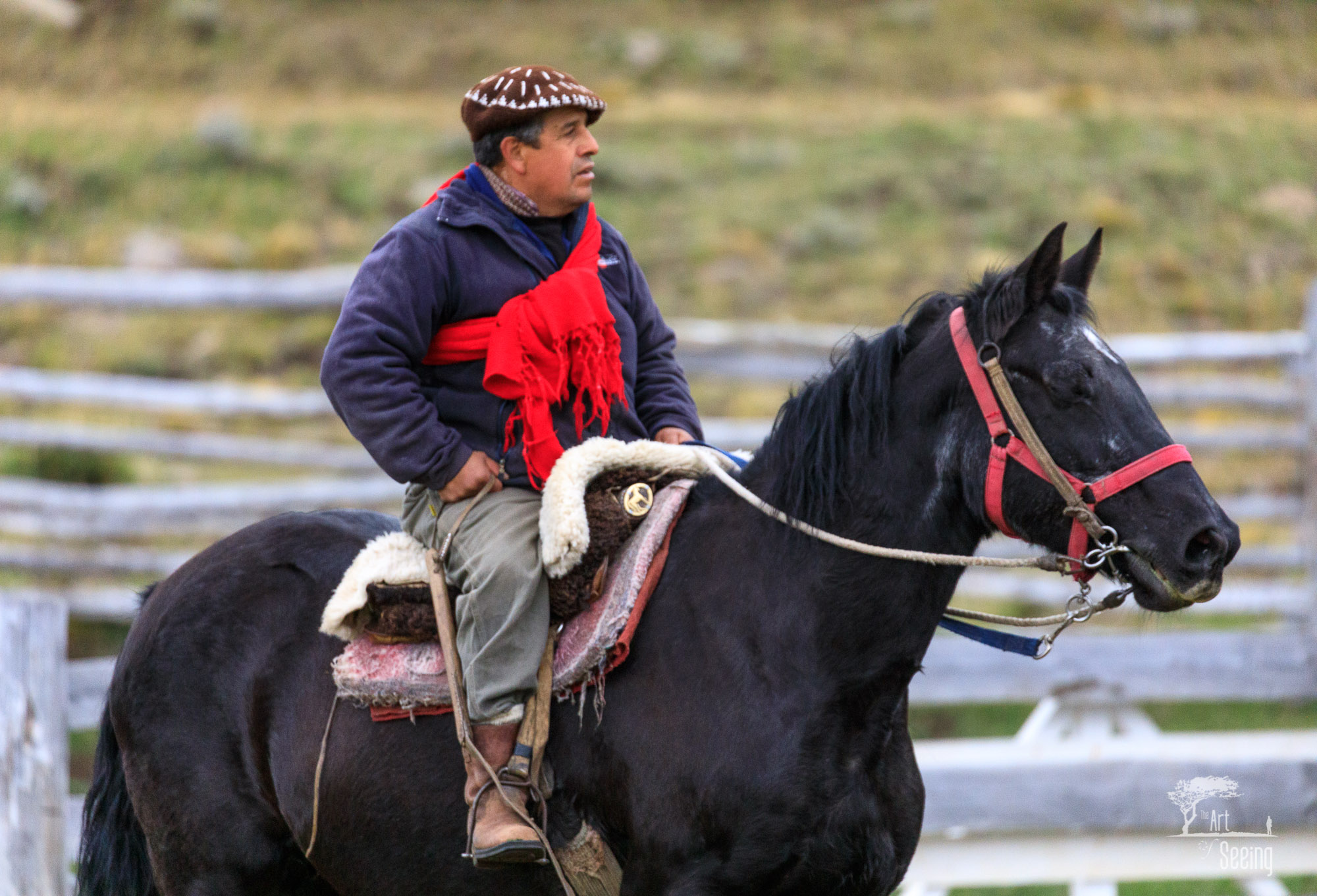
Photo by Ken Lee/Art of Seeing Photography Adventures
In addition to breathtaking landscapes and abundant wildlife, the culture of the people that inhabit Patagonia is well worth your time to explore.
Patagonian gauchos live a much different life than gauchos in other parts of South America, primarily due to the harsher climate of the area in which they live. Thus, one of their most recognizable features - the thick ponchos they wear to keep warm.
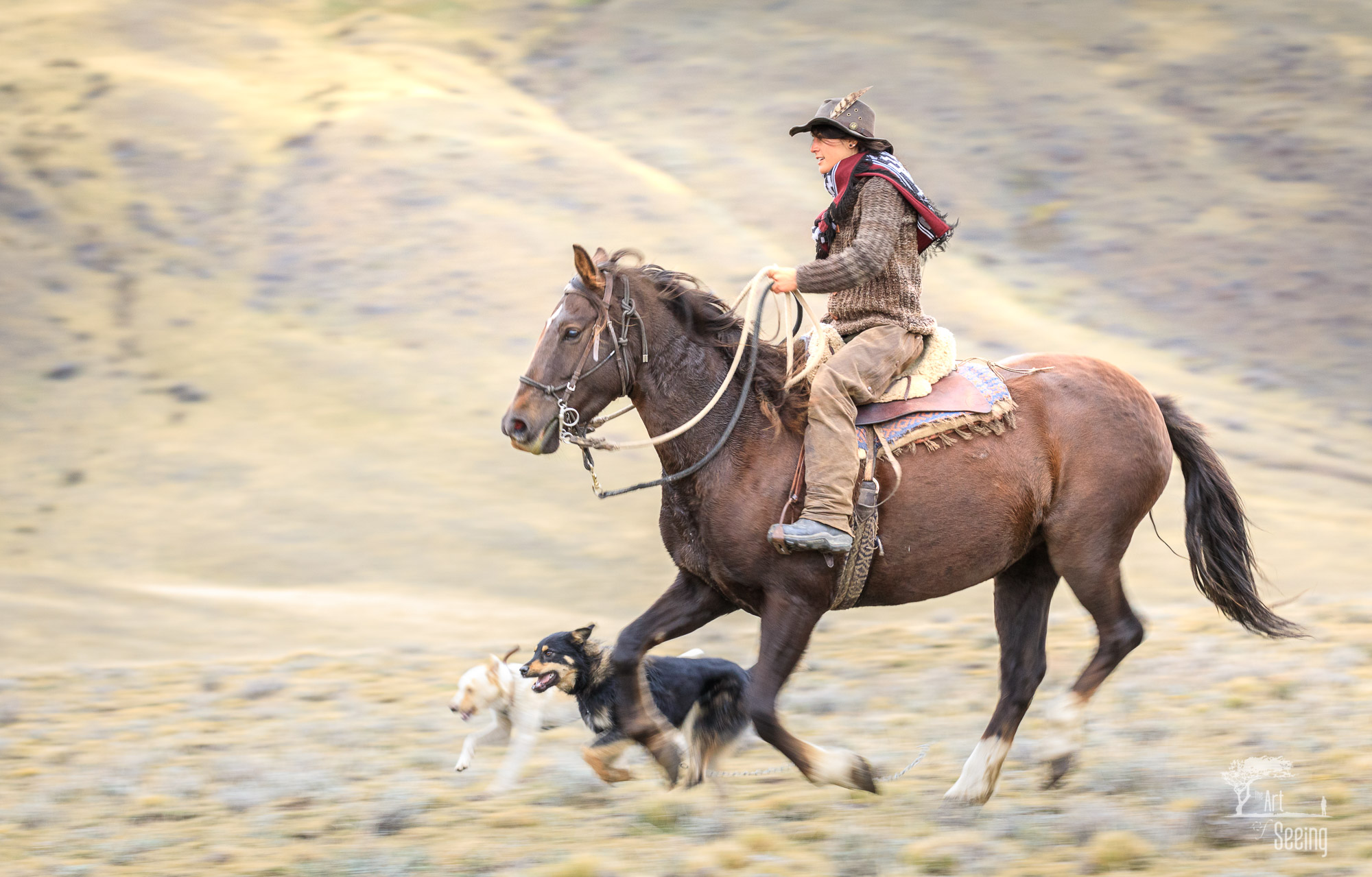
Photo by Ken Lee/Art of Seeing Photography Adventures
Gauchos are renowned for their skilled horseback riding skills as well as their intimate knowledge of the earth - a must in order to survive in such a desolate and challenging environment.
In Patagonia, you’ll find gauchos working herds of sheep, accompanied by their faithful dogs to help them keep track of their herds.
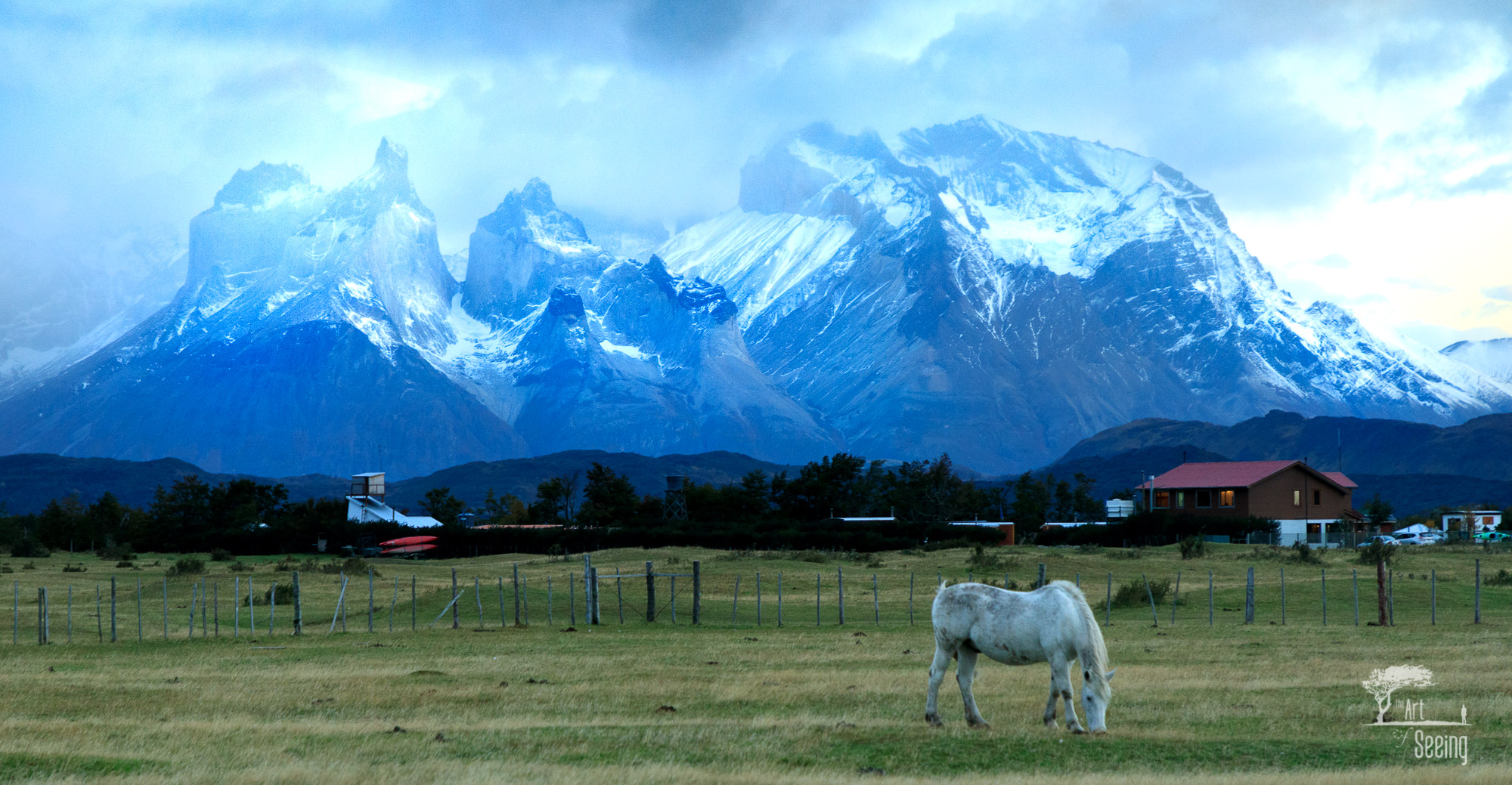
Photo by Ken Lee/Art of Seeing Photography Adventures
Many gauchos also work on ranches, or Estancias, where tourists can visit, stay, and learn more about this unique and vibrant culture.
In fact, you’re likely to find that time spent learning about gauchos is the most precious time you have in Patagonia!
Planning Your Patagonia Photography Trip
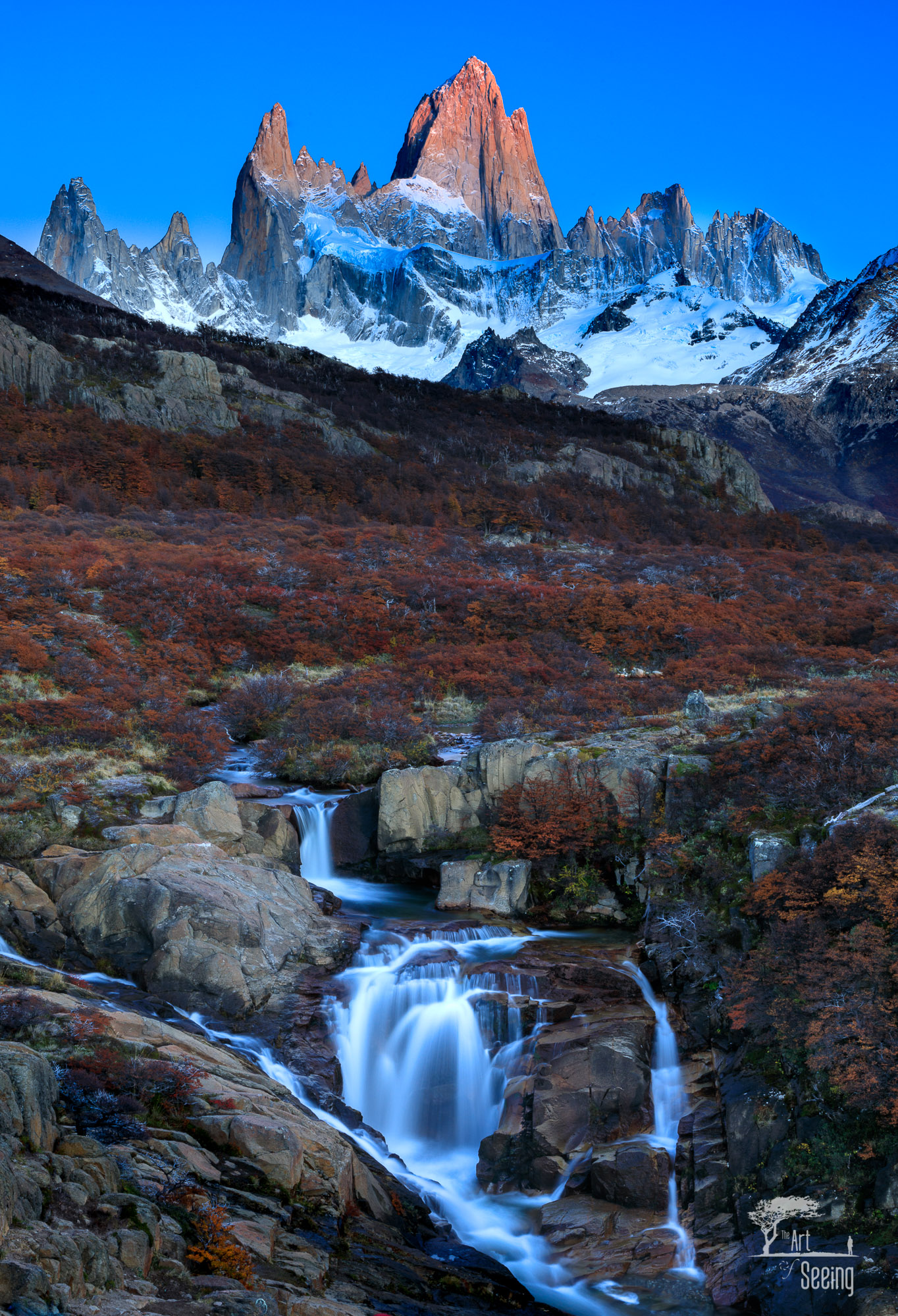
Photo by Ken Lee/Art of Seeing Photography Adventures
When visiting Patagonia with your camera, you certainly want to see the sights you often see in images online.
But you also want to experience Patagonia, too, don’t you? Often it’s when you get away from the tourist spots and into the off-the-beaten-path locations that you truly find opportunities to learn and grow with your camera.
For my money, exploring Patagonia as part of a photography adventure is absolutely the way to go.
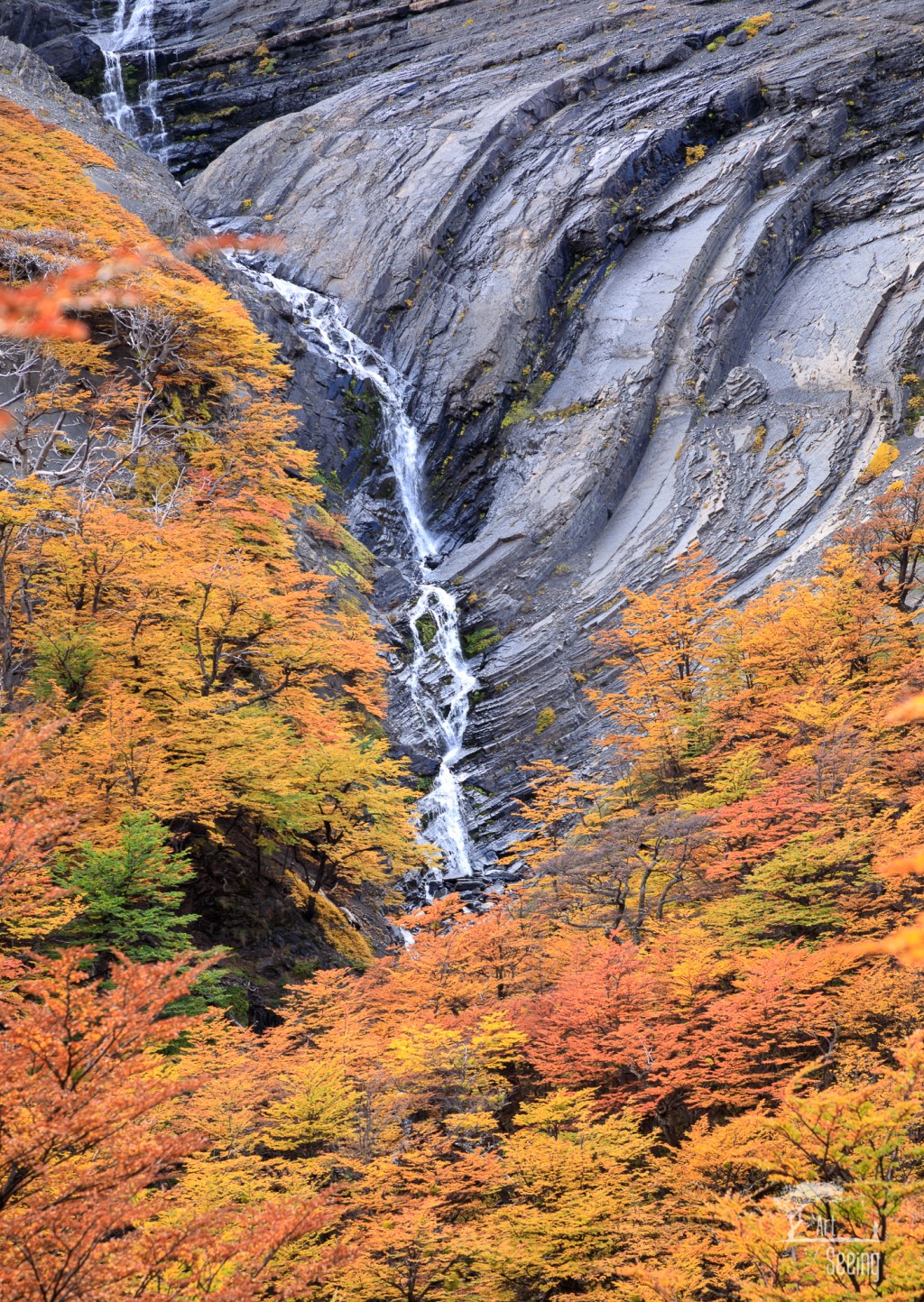
Photo by Ken Lee/Art of Seeing Photography Adventures
Think about it - with a photography adventure, everything is planned out for you once you get to the location. That means you just have to book your flight and pack your bags, and the rest of the journey is taken care of for you.
Without having to worry about where to eat, where to stay, finding guides, and so forth, you can instead focus on the sights and sounds that surround you as you travel through Patagonia.
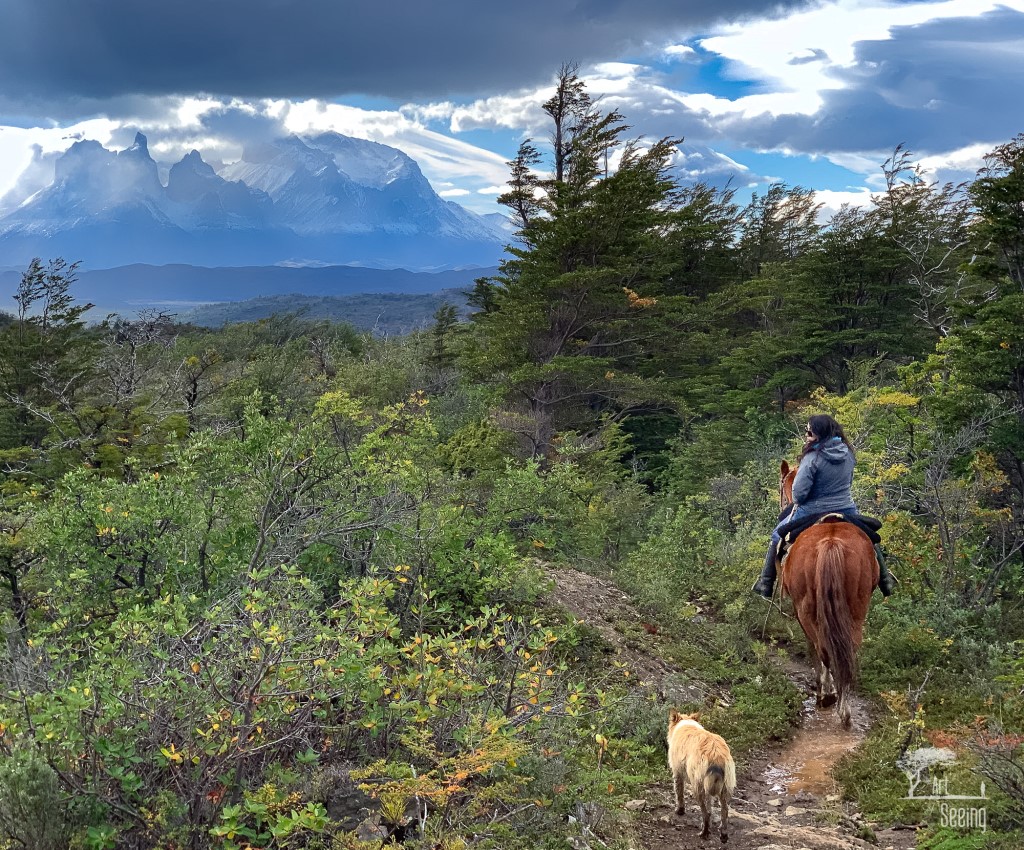
Photo by Ken Lee/Art of Seeing Photography Adventures
Sure, there’s the typical benefits of being on a photography tour in that it’s all planned out for you, but what Ken strives to provide to each adventure participant is a unique experience that allows you to really immerse yourself in the location.
You aren’t just carted around in a vehicle on one of Ken’s adventures - you hike, drive, and on his Patagonia Fall Colors Photography Adventure, you even spend three days on horseback!
What’s more, Ken is all about the creative process - you aren’t just led to gorgeous spots - you’re encouraged to explore the creative process in addition to the technical aspects of taking great photos.
This “whole brain approach” makes elevating your photography game that much more likely.
Sounds exciting, doesn’t it?
Other Tips for Planning a Patagonia Photography Trip
- Where to fly into: Santiago Airport offers the widest array of international flights.
- Best luggage: For a trip of this length, the Nomatic Check-In roller bag is the ideal choice. It offers polycarbonate construction that stands up to the rigors of travel, silent wheels, low-profile handles, and a three-stage aluminum handle to fit your height. With space for 78 liters of gear, this bag has plenty of room for a 5-day trip or longer.
- Attractions & Things to Do: San Cristóbal Hill offers panoramic city views from the second-highest point in Santiago. Plaza de Armas is another must-see spot that is surrounded by beautiful architecture and filled with statues.
- Best Time of Year to Visit: Santiago and the surrounding area is a truly year-round destination. If visiting Patagonia, October through March offers the warmest temperatures.
- Check the weather in the Santiago area right now.
We Recommend
Vietnam Photography and Travel Guide
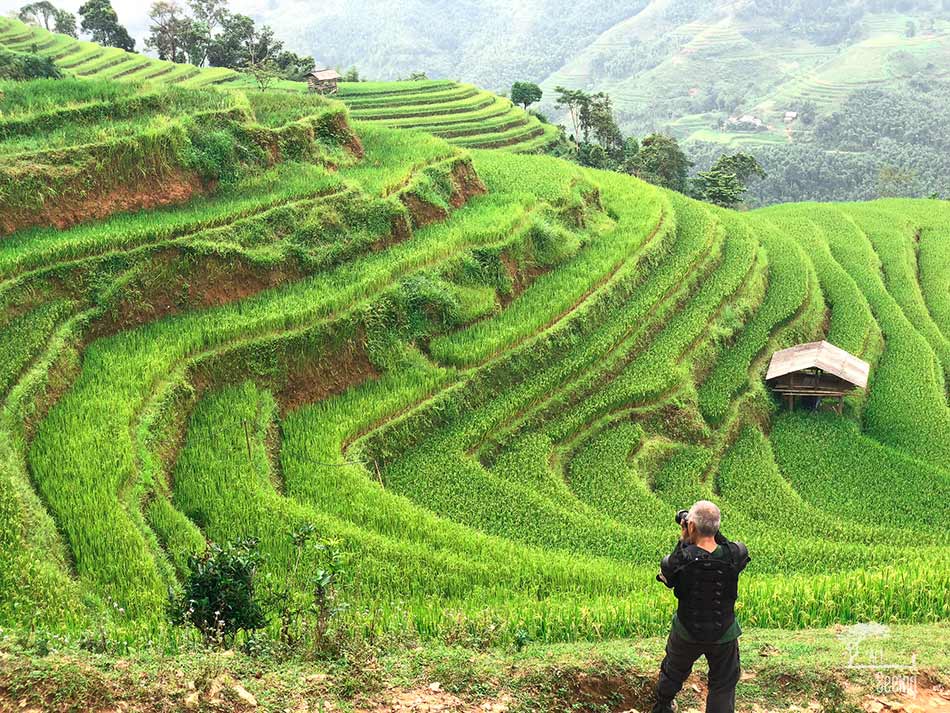
Photo by Ken Lee/Art of Seeing Photography Adventures
Vietnam has emerged as a prime tourist destination in recent years, and one that photographers of all skill levels and abilities regularly visit to seek out unique photographic opportunities.
Aside from its breathtaking landscapes, Vietnam has a vibrant culture with many different ethnic groups that call this country home.
As you prepare to visit Vietnam, be sure to consult our photography and travel guide for some insider tips on where to go and what to photograph.
What to Photograph in Vietnam: Mountains
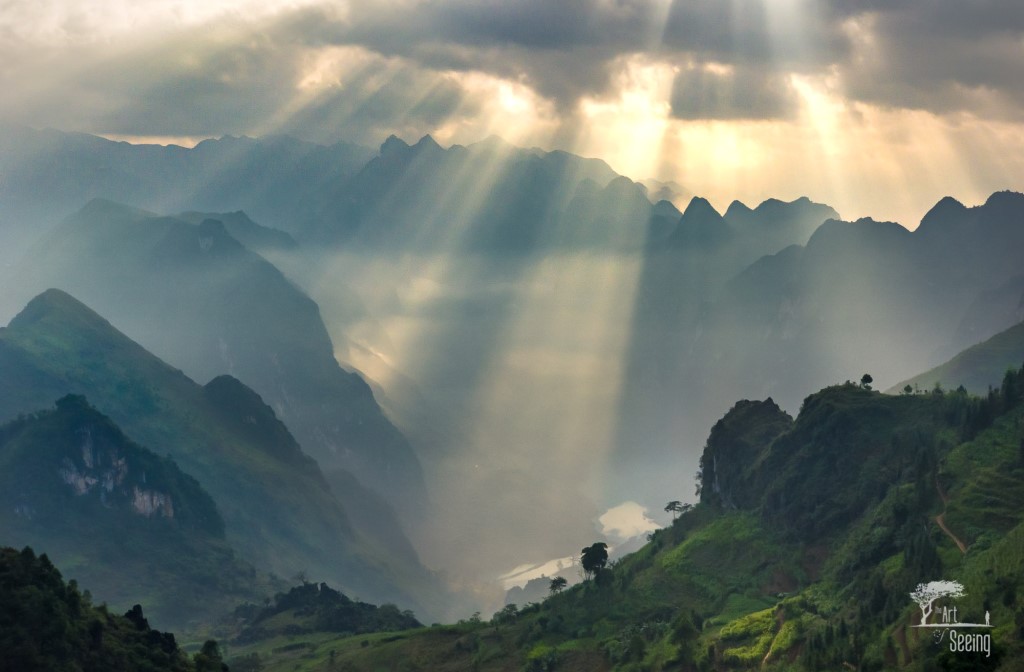
Photo by Ken Lee/Art of Seeing Photography Adventures
When many people think of mountains, they probably think of snow-capped peaks, like the Rocky Mountains, the Alps, or the Andes.
But Vietnam’s mountains - like Pu Ta Leng Peak in the North - are covered with thick jungles, their peaks vibrant and green with lush vegetation.
The sheer number of mountain peaks is astounding, and when paired with deep valleys and canyons covered with trees, it makes for a breathtaking sight, even if the mountains are no more than a distant backdrop, like in the image below.
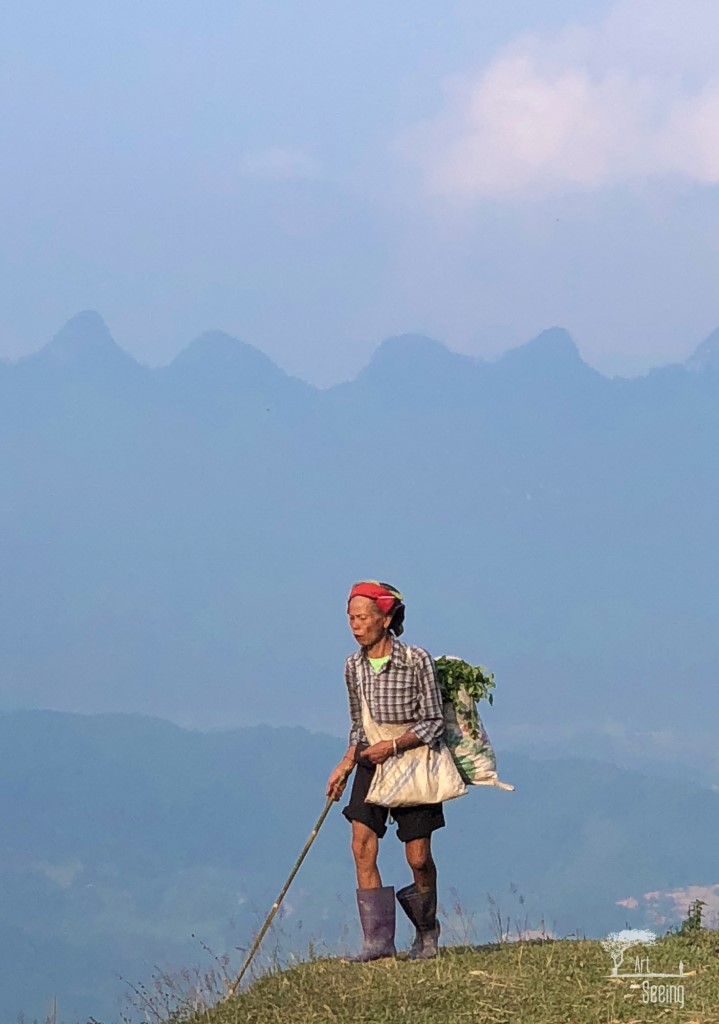
Photo by Ken Lee/Art of Seeing Photography Adventures
Of course, many Vietnamese landscapes have been changed by rice farmers, whose fields are in and of themselves worthy of your attention (more on that in a moment…).
The interesting interplay between the unspoiled jungles and the carefully manicured rice fields is a beautiful compositional opportunity in which you can highlight the relationship between man and the environment.
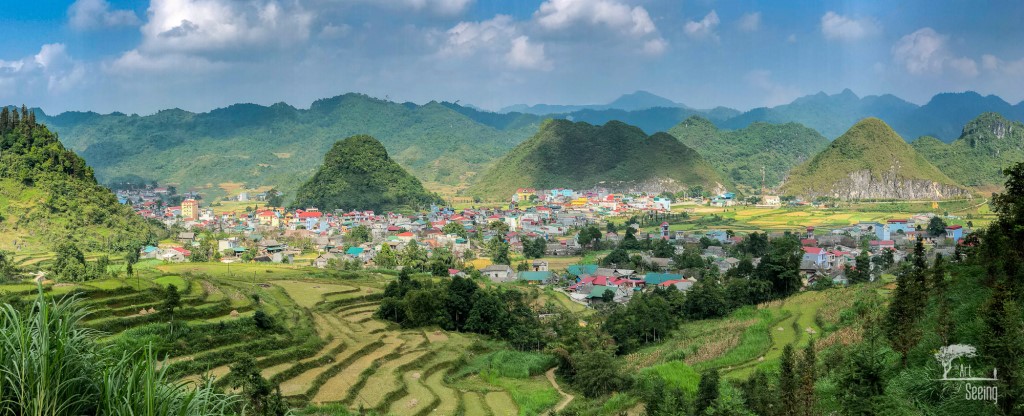
Photo by Ken Lee/Art of Seeing Photography Adventures
Likewise, the small villages that dot the Vietnamese landscape - like the one above - are spectacular in their own right, their brightly-colored buildings adding color variation to an otherwise green landscape.
By getting away from the city centers and into the countryside, you can find hidden gems like these - beautiful and inviting villages tucked up against soaring mountain peaks.
What to Photograph in Vietnam: Rice Fields
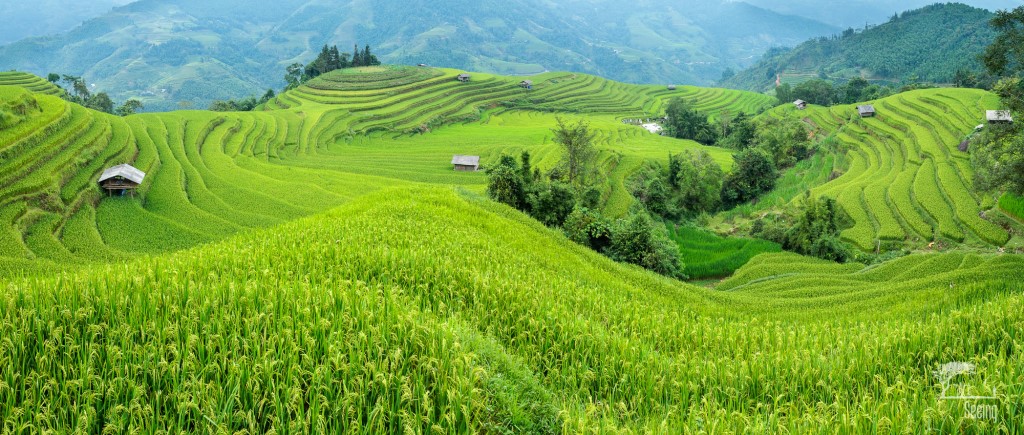
Photo by Ken Lee/Art of Seeing Photography Adventures
The rice fields of Vietnam represent an interesting subject for your photos on a couple of different levels.
First, if you visit Vietnam just before the harvest, you’ll find the rice fields in their peak form - gorgeous, green vistas whose lines undulate with the changing topography of the landscape.
As shown above, this is the ideal chance for trying your hand at a panorama that allows you to highlight those interesting vistas, their shapes taking center stage in the shot.
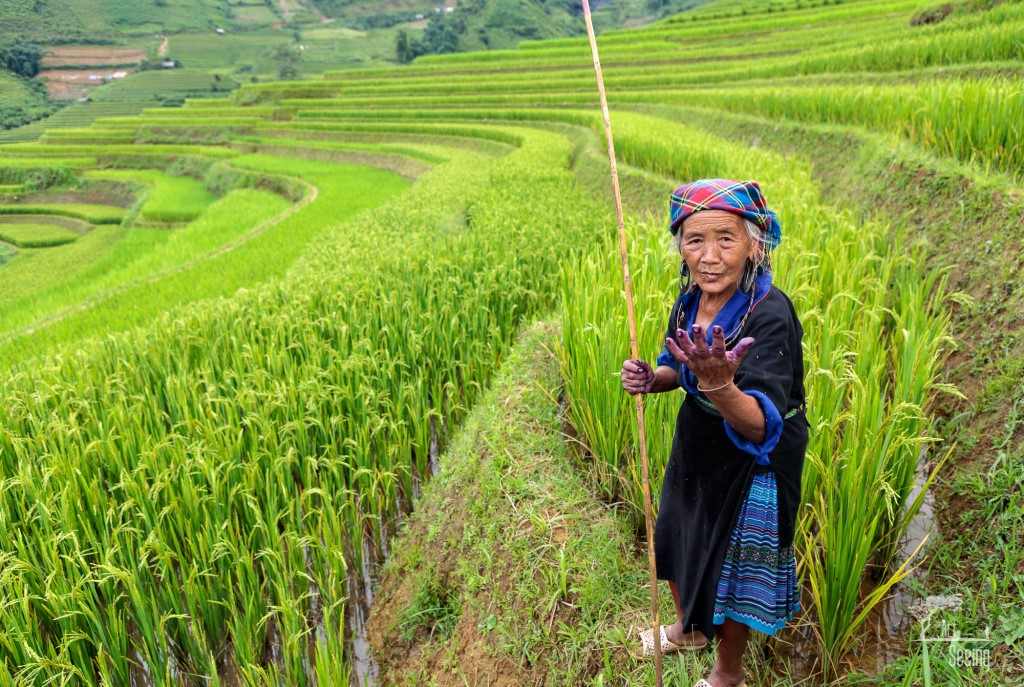
Photo by Ken Lee/Art of Seeing Photography Adventures
Secondly, the rice fields are an ideal location to tell a deep and meaningful story about the people that grow and harvest the rice.
That is, set against the backdrop of the rice field, you can create a telling portrait of farmers like the woman pictured above.
Her weathered and stained hands tell the tale of a woman that has worked hard her entire life in this field, but who nonetheless appreciates all the land has given her and her family over the years.
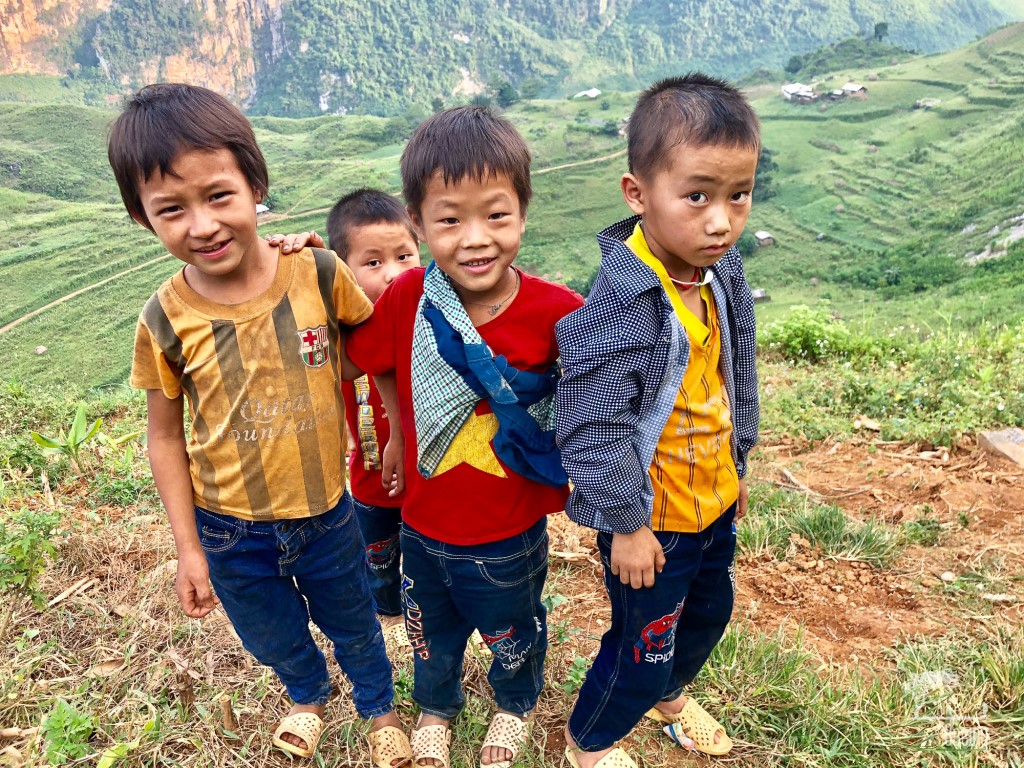
Photo by Ken Lee/Art of Seeing Photography Adventures
It’s the people of Vietnam - who are wonderfully welcoming and friendly - that make these landscapes so beautiful.
In fact, as noted in the introduction, you’d be remiss if you didn’t travel to Northern Vietnam, where you’ll find many ethnic minorities - the Red Dao, Black Tay, Flower Hmong among them.
These unique people can be found tending their crops and sharing their goods in local marketplaces. And if you visit Vietnam the right way, you might even be welcomed into their home in the rural countryside to experience just a taste of what life is like for them.
What to Photograph in Vietnam: Marketplaces, Coasts, and Cities
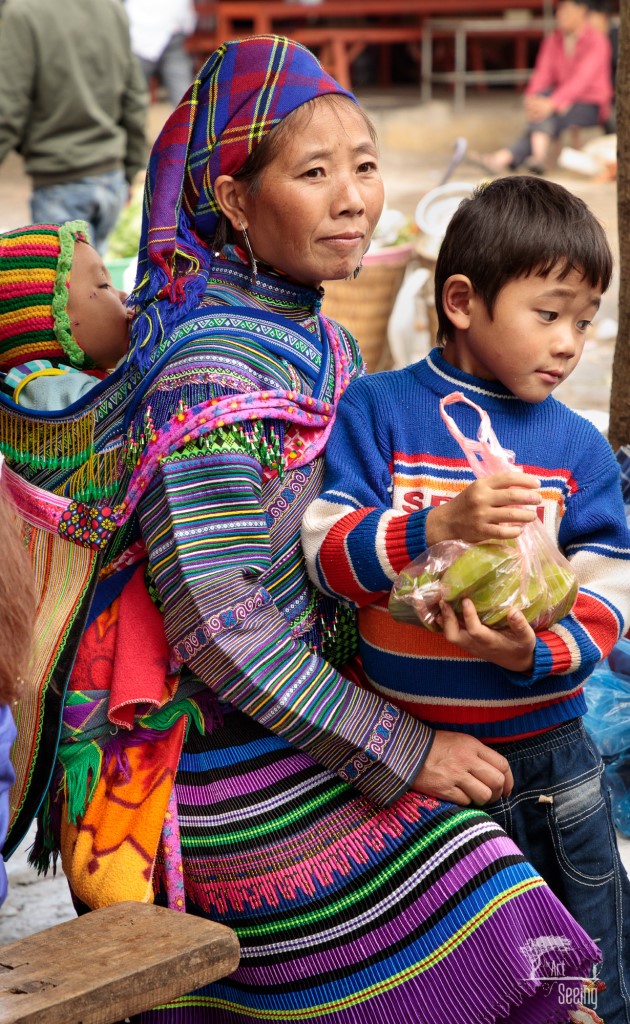
Photo by Ken Lee/Art of Seeing Photography Adventures
While there is certainly something to be said for venturing into the countryside of Vietnam, there are many reasons to spend time in the more populated areas of the country as well.
Its many marketplaces are bustling with life and sights that are prime subjects for an interesting photograph, be that the goods that are offered for sale or the many different people patronizing the market.

Photo by Ken Lee/Art of Seeing Photography Adventures
One of the most spectacular areas of Vietnam, Halong Bay, should certainly be on your list of must-see places when visiting Vietnam.
Here, you’ll find towering tree-covered rock formations called karsts jutting out of the blue waters of the bay where fishing villages and boats dot the water.
This is an extremely popular area to visit, but if you take the time to explore, you’ll find small enclaves away from tourists where you can enjoy a more authentic experience.
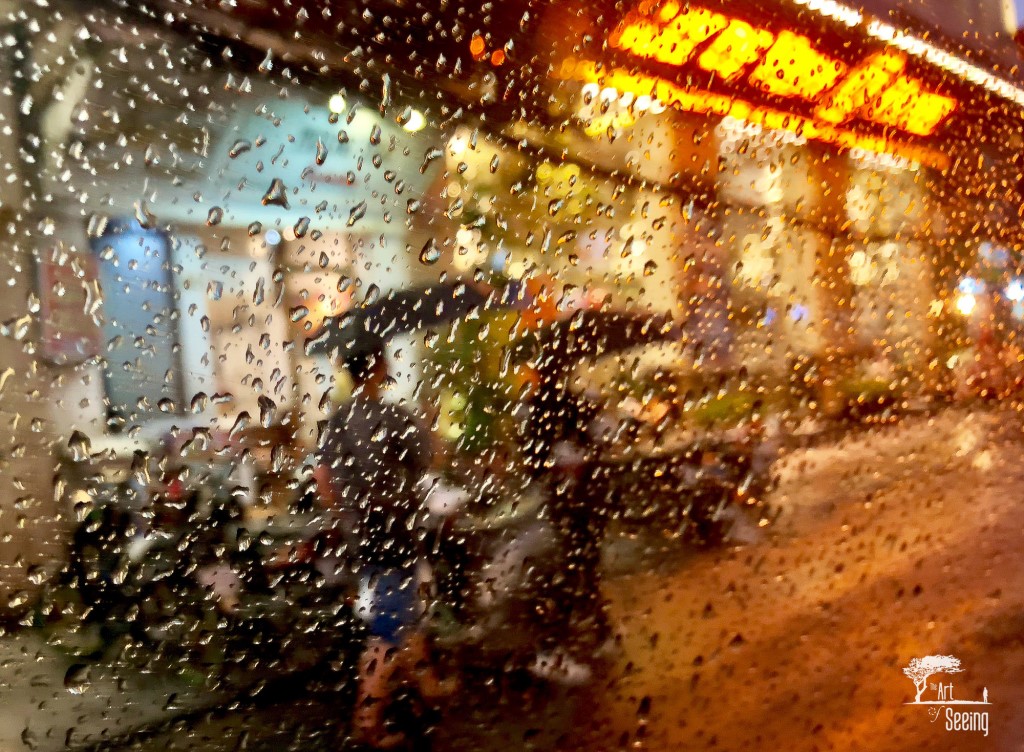
Photo by Ken Lee/Art of Seeing Photography Adventures
Likewise, exploring cities like Hanoi should be done off-the-beaten path. Wander far and wide. Visit markets and squares. Head out at night to capture the vibrant street scenes of the bustling city.
Rain or shine, day or night, urban or rural, Vietnam has much to give you to experience and photograph!
Planning Your Vietnam Photography Trip

Photo by Ken Lee/Art of Seeing Photography Adventures
Vietnam isn’t a large country by any means, but the sheer diversity of the landscape and its people can make planning a photography trip a difficult task. Deciding where to go and when, and how long to stay there are decisions that can cripple the planning process.
What’s more, you don’t just want to scratch the surface of Vietnam when you’re there exploring. Instead, you want to wrest as much out of the experience as possible by immersing yourself in the sights, sounds, culture, and people you encounter.
And the way to do this is by visiting Vietnam as part of a photography tour.
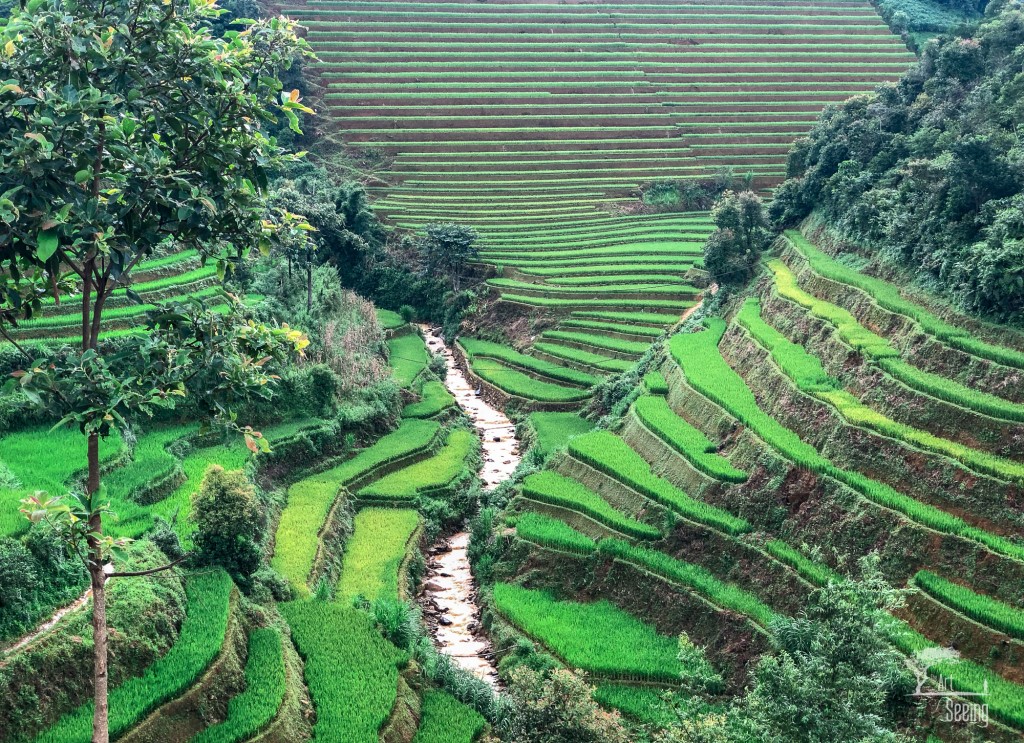
Photo by Ken Lee/Art of Seeing Photography Adventures
When selecting a photography tour, it’s important to really dive deep into what they offer, how many people will be on the tour, where you will visit, and so forth.
I say this because some photography tours only give you a few days to experience Vietnam, and even then it’s only to the tourist hotspots where you can immerse yourself in the beauty of Vietnam.
Likewise, some photography tours are large groups that make it difficult to get much time with the photography leader to get feedback on your work.
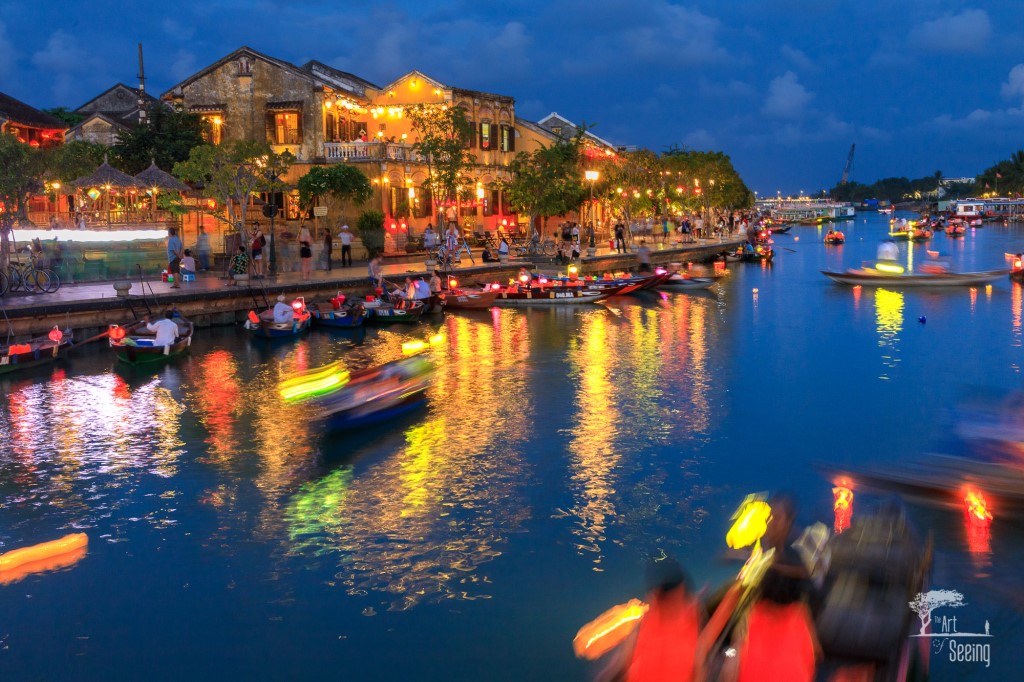
Photo by Ken Lee/Art of Seeing Photography Adventures
That’s simply not the case with The Art of Seeing Photography Adventures.
If you travel to Vietnam with The Art of Seeing, you’ll be one of no more than 10 participants, so you can be assured that you won’t just be a number, but instead a valued participant in the workshop.
Additionally, once you’re in-country, everything is taken care of for you, from the itinerary to the meals, lodging to transportation, and of course, photography instruction while you’re there.
In fact, you’ll spend two weeks there - September 13-26, 2020 - on an authentic, immersive travel experience that will be unforgettable.
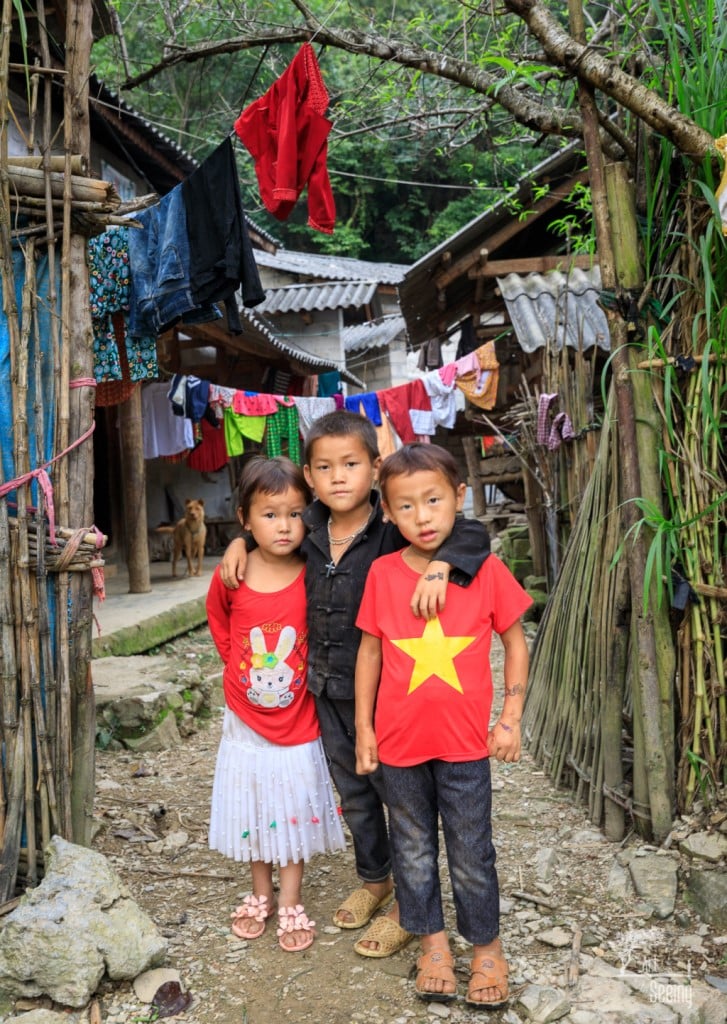
Photo by Ken Lee/Art of Seeing Photography Adventures
Ken Lee, the expert photographer who will lead this Vietnam Backroads & Byways 2020 Photography Workshop & Tour, loves helping other photographers grow in their craft as much as he enjoys taking his own photos.
It’s that kind of leader you want on a photography tour - someone that’s genuinely invested in your development behind the lens.
You’ll learn both technical and creative aspects of photography from Ken, and come out of the workshop a more skilled and creative photographer.
The deadline to sign up for this incredible tour is May 24, 2020, but with limited space, you don’t want to wait too long. Sign up for this Vietnam photography workshop now.
Other Tips for Planning a Vietnam Photography Trip
- Where to fly into: Noi Bai International Airport in Hanoi is your best best.
- Best luggage: For a trip of this length, the Nomatic Check-In roller bag is the ideal choice. It offers polycarbonate construction that stands up to the rigors of travel, silent wheels, low-profile handles, and a three-stage aluminum handle to fit your height. With space for 78 liters of gear, this bag has plenty of room for a 5-day trip or longer.
- Attractions & Things to Do: Visit the Old Quarter in Hanoi and enjoy the 2,000-year-old history of the oldest area of the city. The Lotte Observation Deck is a must-see for breathtaking views of the city.
- Best Time of Year to Visit: Generally speaking, the winter months are best for visiting Vietnam. The temperatures and humidity are lower and the chance of rain is less, too.
- Check the weather in Hanoi right now.
